- Our Mission
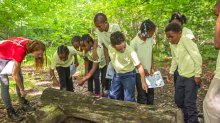

Yes, Field Trips Are Worth the Effort
Culturally enriching trips can boost grades and decrease absences and behavioral infractions, new research reveals.
As a teacher, Elena Aguilar often looked for opportunities to get her students out of the classroom and into different neighborhoods or natural environments. “We did the usual museum trips and science center stuff, but I loved the trips which pushed them into unfamiliar territory,” writes Aguilar , an instructional coach and author. Nudging kids out of their comfort zones, she says, “taught them about others as well as themselves. It helped them see the expansiveness of our world and perhaps inspired them to think about what might be available to them out there.”
Aguilar’s thinking made an impact: 15 years after traveling with her third-grade class to Yosemite National Park, a student contacted Aguilar on Facebook to thank her for the life-changing excursion. “You changed our lives with that trip,” the student wrote. “It's what made me want to be a teacher, to be able to give that same gift to other kids.”
As schools grapple with pandemic-related concerns about balancing in-seat instructional time with non-essentials like trips, new research published in The Journal of Human Resources argues that field trips, and the vital educational experiences that they provide—whether it’s a visit to a local museum or a big commitment like Aguilar’s national park trip—deliver a host of positive social and academic outcomes and are worth the effort.
“The pandemic should not keep schools from providing these essential cultural experiences forever,” asserts Jay P. Greene , one of the study’s co-authors and a senior research fellow at the Heritage Foundation, in an opinion piece for the Daily News . “If schools make culturally-enriching field trips an integral part of the education experience, all students—especially those whose parents have a harder time accessing these experiences on their own—would benefit.”
In the study, researchers assigned more than 1,000 fourth- and fifth-grade students in Atlanta to two groups. One group participated in three to six “culturally-enriching” field trips—visits to an art museum, a live theater performance, and a symphony concert—while students in the control group stayed put in class. The outcome? Kids in the field trip group “scored higher on end-of-grade exams, received higher course grades, were absent less often, and had fewer behavioral infractions,” compared to students in the control group, according to a ScienceDaily brief . Benefits lasted two to three years, Greene writes, and were “most visible when students were in middle school.”
“We are able to demonstrate that a relatively simple intervention—and we consider it pretty low-touch; three field trips in a year, maybe six field trips in two years—can actually have some substantial impacts,” says lead study author Heidi Holmes Erickson in an interview with The 74 . “They’re not just limited to social benefits. It shows that smaller interventions can actually have some significant effects on academics as well.”
Field trips aren’t a threat to in-class instruction, Erickson notes, they’re a tool to help bolster engagement and expand students’ horizons. “It's possible to expose students to a broader world and have a culturally enriching curriculum without sacrificing academic outcomes, and it may actually improve academic outcomes,” Erickson says. Far from harming test scores, the researchers found that culturally rich excursions reinforce academics and “students who participated in these field trips were doing better in class.”
Meanwhile, class trips don't need to be elaborate productions to make an impact: small excursions outside the classroom—"low-touch," as the researchers call them—can pack a punch. Here’s how three educators recommend dialing it back with low-stakes options that are both engaging and stimulating for students, but might not require days to prepare and plan:
Make Them Bite-Sized : Instead of allocating an entire day to a field trip, educational consultant Laurel Schwartz takes her classes on micro field trips , or “short outings that can be completed in a single class period.” These real-world encounters, she says, are especially beneficial for English learners and world language students. A micro field trip to a nearby park or around school grounds, for example, can be a great opportunity to “enhance a unit on nature and wildlife while reinforcing vocabulary for senses, colors, and the concepts of quantity and size,” Schwartz writes. “Afterwards, students might write descriptive stories set in the place you visited using vocabulary collected and defined together by the class.”
Try Teacher-Less Trips : To encourage exploration and learning outside of the classroom, former social studies teacher Arch Grieve removes himself from the equation with teacher-less field trips rooted in students’ local communities. Grieve only suggests options that are directly tied to a unit being discussed in class—like attending a talk at a local university or visiting a museum or cultural festival—and offers extra credit to incentivize students. “These trips allow for a greater appreciation of my subject matter than is possible in the school setting, and perhaps best of all, there's little to no planning involved.”
Explore Virtual Options : It may not be as fun as visiting in person, but the Internet makes it possible to visit museums like The National Gallery of London and The Vatican Museums without leaving the school building. Middle school English teacher Laura Bradley likes to search the Museums for Digital Learning website by topic, keyword, and grade level, to find lessons and activities that meet her unique curricular needs. The site grants access to digitized museum collections, 3D models, audio files, documents, images, and videos.
- Cash Rewards Credit Card
- Personal Loan
- Home Mortgage
- Student Loan
- Self-Guided Planning
- Planning with a Financial Professional
- 403(b) Plans
- Traditional & Roth IRAs
- Group Term Life Insurance
- Accidental Death and Dismemberment Insurance
- Guaranteed Issue Life Insurance
- Accident and Injury Insurance
- Disability Income Protection
- Dental and Vision Insurance
- Pet Health Insurance
- Medicare Supplement Insurance
- Auto & Home Insurance
- Renters Insurance
- Discount Marketplace
- Discount Tickets
- Auto Buying
- Wireless Program
- Complimentary Life Insurance
- Student Debt Navigator Tool
- Mental Health App
- Travel Rewards
- Job Layoff Assistance
- Disaster Relief Assistance
- Family & Wellness
- Life Insurance Protection
- Living in Retirement
- Paying for College
- Personal Finance
- Retirement Learning Center
- Shopping Discounts
- Student Loan Debt
- Travel & Vacations
Get Started
Create an account to get started, or if you already have an account, sign in below
How Field Trips Boost Students’ Lifelong Success
Educational trips contribute to better student outcomes in school and beyond. maximize the impact of field trips on students with these 9 ideas..
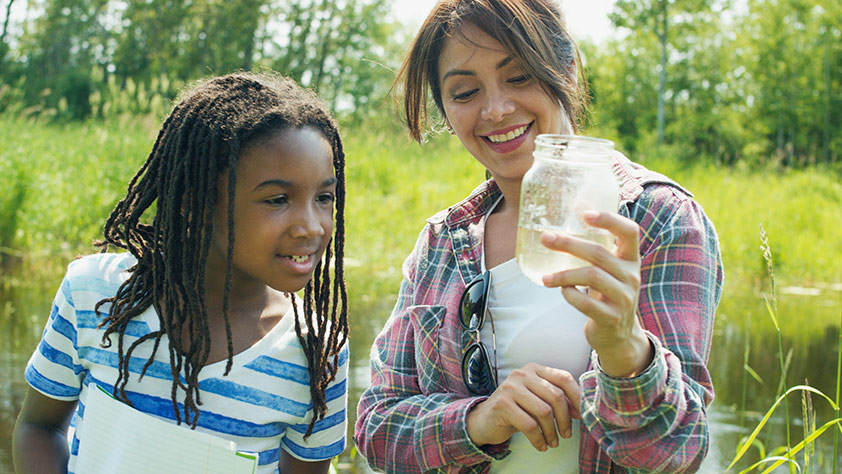
by NEA Member Benefits
Here’s why field trips are important
The study found that regardless of gender, ethnicity or socioeconomic status, children who take school trips have better grades (59%), higher graduation rates from high school (95%) and college (63%) and greater income (12% higher annually).
In fact, 89% said educational trips had a positive, lasting impact on their education and career because enriching field trips made them more engaged, intellectually curious, and interested in and out of school.
“When I was growing up, my parents said the 3 Rs (reading, writing and arithmetic) were important,” says Roger Dow, president and CEO of the U.S. Travel Association. “But for my kids, I made ‘roaming’ the fourth R. We live in a global society, and if you don’t see outside the neighborhood you grow up in, the world will pass you by. Traveling has opened my kids’ eyes. It’s made them more confident and inspired them to reach outside their normal environment to learn and obtain skills to bring them to the next level.”
More benefits of school trips
Margy Natalie, acting onsite learning manager at the Smithsonian Institution’s National Air and Space Museum , notes the powerful effect school trips can have on student learning: “Field trips give students the opportunity to learn in a natural environment and experience things first-hand and from primary resources, rather than texts; real objects rather than photos.”
Carylann Assante, executive director for Student & Youth Travel Association (SYTA) and SYTA Youth Foundation , seconds the notion that real world exploration outside the classroom can bolster students’ critical thinking skills. “Today’s students are visual learners, and a field trip lets them touch, feel and listen to what they’re learning about, which helps them build on classroom instruction, gain a better understanding of topics, build cultural understanding and tolerance, and expose them to worlds outside their own.”
Assante says field trips are particularly important for disadvantaged students, as they provide students with unique opportunities that level the playing field. “Field trips give diverse and financially-in-need students equal opportunity to experience things outside classroom that their families may not be able to afford,” she says.
A field trip can also be the first trip a student takes without their parents, so it builds independence, as well. “There’s a reason people say I need to get away and recharge my batteries. There’s truth to it,” Dow says. “If I was a school system looking at these stats, I couldn’t afford not to make this a part of our curriculum.”
Tips for planning a successful field trip
You’ve decided to plan an educational field trip for your class, whether it’s to an art museum, science museum, historic site, aquarium, planetarium or some other immersive, interactive learning environment. Now, you need to know what steps to take to ensure a successful field trip. Keep these expert tips in mind:
1. Look around your region for interesting day trips
Dow suggests a planned field trip so you and your class can easily explore an aspect of local history on a day trip. “You can take a quick drive and see the history of places around you—there’s tons of inexpensive things teachers can do that will have a phenomenal impact,” he says.
2. Do your homework
Ideally, you could scope out the destination in advance to ensure the field trip will produce your desired learning experience. “Plan carefully, do your research, visit the site before you plan, ask questions and take recommendations of staff,” Natalie suggests.
3. Follow protocol
“Teachers need to review their school’s policies on field trips in advance and prepare the forms with specific learning objectives and how the field trip will accomplish those objectives tied to their school's core curriculum,” Assante says. Most museums, attractions and locations have education materials to explain how their attraction supports teacher lesson plans and educational curriculums.
4. Involve your students in the preparation
Prepare your class for their upcoming school field trip by getting them interested and excited about what their experience may be like. “Discuss the goals of the field trip in advance, talk about what they will see and what they should learn,” Natalie says.
Consider letting the class pick the field trip destination so they have ownership and will feel invested in it, Assante suggests.
5. Make trips relevant to classroom instruction
“Base your field trips on your content area. If you’re studying ancient Egypt, don’t take them to Jamestown,” Natalie says. “Focus on how the trip fits into your content or another educational goal. A field trip should be a day out, not a day off.”
6. Incorporate technology
“Many students use their mobile devices to engage with the field trip in the classroom with apps and blogs,” says Assante. This can help create an interactive learning experience that engages students during the trip, and then reconnect with that experience later in the classroom and at home.
7. Engage the senses
Select a field trip destination where students won’t be sitting down, like they typically do in the classroom. They should be able to touch, explore and share their experiences, Assante says.
8. Fundraise to cover any extra costs
“Engage the parents, PTA or other teachers to support school-wide field trips and help raise the funds so everyone can afford to attend the trip,” says Assante, who also notes some large companies even offer field trip grants.
If you’re looking for deals on tickets to attractions and events, see if you can cut the costs of the admissions fees with the NEA Discount Ticket Program .
9. Follow up on the lessons learned
“Students are much more likely to write about an experience they recently had, like the field trip, than a random prompt,” says Natalie, who recommends following up with graded assignments. “Have each student write about their favorite artifact or activity on the field trip, or why this field trip is important to keep, or conversely, how a different field trip might be better.”
Search for travel deals for NEA members
Nea discount tickets program.
Enjoy unique access and deep discounts to must-see places, events and shows. Get up to 40% off tickets to Disney World, Universal Studios, Cirque du Soleil, AMC Movies, Broadway shows, concerts, sporting events and much more!
NEA Travel: Car Rental
Save up to 25% when you rent a car through the NEA Travel Car Rental program. Compare rates at companies such as Avis, Budget, Enterprise and Hertz and pick the best deal for your budget.
NEA Travel: Hotels
Save up to 60% when you book through NEA Travel. And with guaranteed price matching you can rest assured that you’re getting the best hotel price.
NEA Travel: Flights
Find low fares and book a flight to your favorite locales or far-off destinations. Compare rates from multiple carriers to find the best trip for you.
NEA Travel: Cruises
You’ll find the best cruise deals, exclusive offers and amenities from the top cruise lines such as Disney, Carnival and Royal Caribbean.
You might also like

Your Pass to Fun: Get Discounts on Tickets to Popular Attractions
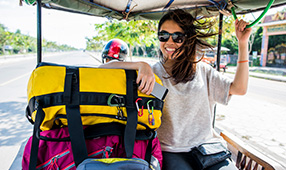
8 Little-Known Vacation Deals for Teachers
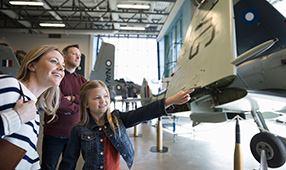
How to Enjoy Great Museums for Free
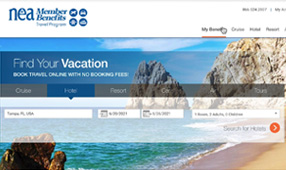
Finding Travel Deals Is Easy With the NEA Travel Program
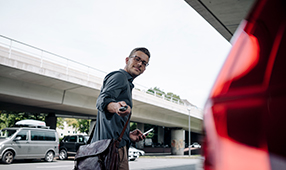
Car Rental Made Quick and Easy

How to Plan a Vacation Without Going Into Debt

Easy Ways to Save Money on a Road Trip
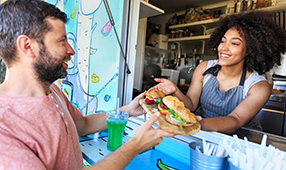
How to Dine on a Dime While Traveling

Travel the World With Grants Just for Educators

Don’t Miss These Top Discounts for Teachers and Education Professionals

Get Easy Access to Our Most Requested Deals and Discounts

A New Way for NEA Members to Find Exclusive Shopping Discounts

- The Journal
- Vol. 14, No. 1
The Educational Value of Field Trips
Jay P. Greene
Brian Kisida
Daniel H. Bowen
Jay P. Greene joined EdNext Editor-in-chief Marty West to discuss the benefits of field trips, including how seeing live theater is a more enriching experience to students, on the EdNext podcast .

Crystal Bridges; Crystal Bridges Museum of American Art; School Tour © 2013 Stephen Ironside/Ironside Photography Bo Bartlett – “The Box” – 2002 • Oil on Linen • 82 x 100 – Photographer is Karen Mauch
The school field trip has a long history in American public education. For decades, students have piled into yellow buses to visit a variety of cultural institutions, including art, natural history, and science museums, as well as theaters, zoos, and historical sites. Schools gladly endured the expense and disruption of providing field trips because they saw these experiences as central to their educational mission: schools exist not only to provide economically useful skills in numeracy and literacy, but also to produce civilized young men and women who would appreciate the arts and culture. More-advantaged families may take their children to these cultural institutions outside of school hours, but less-advantaged students are less likely to have these experiences if schools do not provide them. With field trips, public schools viewed themselves as the great equalizer in terms of access to our cultural heritage.
Today, culturally enriching field trips are in decline. Museums across the country report a steep drop in school tours. For example, the Field Museum in Chicago at one time welcomed more than 300,000 students every year. Recently the number is below 200,000. Between 2002 and 2007, Cincinnati arts organizations saw a 30 percent decrease in student attendance. A survey by the American Association of School Administrators found that more than half of schools eliminated planned field trips in 2010–11.
The decision to reduce culturally enriching field trips reflects a variety of factors. Financial pressures force schools to make difficult decisions about how to allocate scarce resources, and field trips are increasingly seen as an unnecessary frill. Greater focus on raising student performance on math and reading standardized tests may also lead schools to cut field trips. Some schools believe that student time would be better spent in the classroom preparing for the exams. When schools do organize field trips, they are increasingly choosing to take students on trips to reward them for working hard to improve their test scores rather than to provide cultural enrichment. Schools take students to amusement parks, sporting events, and movie theaters instead of to museums and historical sites. This shift from “enrichment” to “reward” field trips is reflected in a generational change among teachers about the purposes of these outings. In a 2012‒13 survey we conducted of nearly 500 Arkansas teachers, those who had been teaching for at least 15 years were significantly more likely to believe that the primary purpose of a field trip is to provide a learning opportunity, while more junior teachers were more likely to see the primary purpose as “enjoyment.”
If schools are de-emphasizing culturally enriching field trips, has anything been lost as a result? Surprisingly, we have relatively little rigorous evidence about how field trips affect students. The research presented here is the first large-scale randomized-control trial designed to measure what students learn from school tours of an art museum.
We find that students learn quite a lot. In particular, enriching field trips contribute to the development of students into civilized young men and women who possess more knowledge about art, have stronger critical-thinking skills, exhibit increased historical empathy, display higher levels of tolerance, and have a greater taste for consuming art and culture.
Design of the Study and School Tours
The 2011 opening of the Crystal Bridges Museum of American Art in Northwest Arkansas created the opportunity for this study. Crystal Bridges is the first major art museum to be built in the United States in the last four decades, with more than 50,000 square feet of gallery space and an endowment in excess of $800 million. Portions of the museum’s endowment are devoted to covering all of the expenses associated with school tours. Crystal Bridges reimburses schools for the cost of buses, provides free admission and lunch, and even pays for the cost of substitute teachers to cover for teachers who accompany students on the tour.
Because the tour is completely free to schools, and because Crystal Bridges was built in an area that never previously had an art museum, there was high demand for school tours. Not all school groups could be accommodated right away. So our research team worked with the staff at Crystal Bridges to assign spots for school tours by lottery. During the first two semesters of the school tour program, the museum received 525 applications from school groups representing 38,347 students in kindergarten through grade 12. We created matched pairs among the applicant groups based on similarity in grade level and other demographic factors. An ideal and common matched pair would be adjacent grades in the same school. We then randomly ordered the matched pairs to determine scheduling prioritization. Within each pair, we randomly assigned which applicant would be in the treatment group and receive a tour that semester and which would be in the control group and have its tour deferred.
We administered surveys to 10,912 students and 489 teachers at 123 different schools three weeks, on average, after the treatment group received its tour. The student surveys included multiple items assessing knowledge about art as well as measures of critical thinking, historical empathy, tolerance, and sustained interest in visiting art museums. Some groups were surveyed as late as eight weeks after the tour, but it was not possible to collect data after longer periods because each control group was guaranteed a tour during the following semester as a reward for its cooperation. There is no indication that the results reported below faded for groups surveyed after longer periods.
We also assessed students’ critical-thinking skills by asking them to write a short essay in response to a painting that they had not previously seen. Finally, we collected a behavioral measure of interest in art consumption by providing all students with a coded coupon good for free family admission to a special exhibit at the museum to see whether the field trip increased the likelihood of students making future visits.
All results reported below are derived from regression models that control for student grade level and gender and make comparisons within each matched pair, while taking into account the fact that students in the matched pair of applicant groups are likely to be similar in ways that we are unable to observe. Standard validity tests confirmed that the survey items employed to generate the various scales used as outcomes measured the same underlying constructs.
The intervention we studied is a modest one. Students received a one-hour tour of the museum in which they typically viewed and discussed five paintings. Some students were free to roam the museum following their formal tour, but the entire experience usually involved less than half a day. Instructional materials were sent to teachers who went on a tour, but our survey of teachers suggests that these materials received relatively little attention, on average no more than an hour of total class time. The discussion of each painting during the tour was largely student-directed, with the museum educators facilitating the discourse and providing commentary beyond the names of the work and the artist and a brief description only when students requested it. This format is now the norm in school tours of art museums. The aversion to having museum educators provide information about works of art is motivated in part by progressive education theories and by a conviction among many in museum education that students retain very little factual information from their tours.
Recalling Tour Details. Our research suggests that students actually retain a great deal of factual information from their tours. Students who received a tour of the museum were able to recall details about the paintings they had seen at very high rates. For example, 88 percent of the students who saw the Eastman Johnson painting At the Camp—Spinning Yarns and Whittling knew when surveyed weeks later that the painting depicts abolitionists making maple syrup to undermine the sugar industry, which relied on slave labor. Similarly, 82 percent of those who saw Norman Rockwell’s Rosie the Riveter could recall that the painting emphasizes the importance of women entering the workforce during World War II. Among students who saw Thomas Hart Benton’s Ploughing It Under , 79 percent recollected that it is a depiction of a farmer destroying his crops as part of a Depression-era price support program. And 70 percent of the students who saw Romare Bearden’s Sacrifice could remember that it is part of the Harlem Renaissance art movement. Since there was no guarantee that these facts would be raised in student-directed discussions, and because students had no particular reason for remembering these details (there was no test or grade associated with the tours), it is impressive that they could recall historical and sociological information at such high rates.
These results suggest that art could be an important tool for effectively conveying traditional academic content, but this analysis cannot prove it. The control-group performance was hardly better than chance in identifying factual information about these paintings, but they never had the opportunity to learn the material. The high rate of recall of factual information by students who toured the museum demonstrates that the tours made an impression. The students could remember important details about what they saw and discussed.
Critical Thinking. Beyond recalling the details of their tour, did a visit to an art museum have a significant effect on students? Our study demonstrates that it did. For example, students randomly assigned to receive a school tour of Crystal Bridges later displayed demonstrably stronger ability to think critically about art than the control group.
During the first semester of the study, we showed all 3rd- through 12th-grade students a painting they had not previously seen, Bo Bartlett’s The Box . We then asked students to write short essays in response to two questions: What do you think is going on in this painting? And, what do you see that makes you think that? These are standard prompts used by museum educators to spark discussion during school tours.
We stripped the essays of all identifying information and had two coders rate the compositions using a seven-item rubric for measuring critical thinking that was developed by researchers at the Isabella Stewart Gardner Museum in Boston. The measure is based on the number of instances that students engaged in the following in their essays: observing, interpreting, evaluating, associating, problem finding, comparing, and flexible thinking. Our measure of critical thinking is the sum of the counts of these seven items. In total, our research team blindly scored 3,811 essays. For 750 of those essays, two researchers scored them independently. The scores they assigned to the same essay were very similar, demonstrating that we were able to measure critical thinking about art with a high degree of inter-coder reliability.
We express the impact of a school tour of Crystal Bridges on critical-thinking skills in terms of standard-deviation effect sizes. Overall, we find that students assigned by lottery to a tour of the museum improve their ability to think critically about art by 9 percent of a standard deviation relative to the control group. The benefit for disadvantaged groups is considerably larger (see Figure 1). Rural students, who live in towns with fewer than 10,000 people, experience an increase in critical-thinking skills of nearly one-third of a standard deviation. Students from high-poverty schools (those where more than 50 percent of students receive free or reduced-price lunches) experience an 18 percent effect-size improvement in critical thinking about art, as do minority students.

A large amount of the gain in critical-thinking skills stems from an increase in the number of observations that students made in their essays. Students who went on a tour became more observant, noticing and describing more details in an image. Being observant and paying attention to detail is an important and highly useful skill that students learn when they study and discuss works of art. Additional research is required to determine if the gains in critical thinking when analyzing a work of art would transfer into improved critical thinking about other, non-art-related subjects.
Historical Empathy. Tours of art museums also affect students’ values. Visiting an art museum exposes students to a diversity of ideas, peoples, places, and time periods. That broadening experience imparts greater appreciation and understanding. We see the effects in significantly higher historical empathy and tolerance measures among students randomly assigned to a school tour of Crystal Bridges.
Historical empathy is the ability to understand and appreciate what life was like for people who lived in a different time and place. This is a central purpose of teaching history, as it provides students with a clearer perspective about their own time and place. To measure historical empathy, we included three statements on the survey with which students could express their level of agreement or disagreement: 1) I have a good understanding of how early Americans thought and felt; 2) I can imagine what life was like for people 100 years ago; and 3) When looking at a painting that shows people, I try to imagine what those people are thinking. We combined these items into a scale measuring historical empathy.
Students who went on a tour of Crystal Bridges experience a 6 percent of a standard deviation increase in historical empathy. Among rural students, the benefit is much larger, a 15 percent of a standard deviation gain. We can illustrate this benefit by focusing on one of the items in the historical empathy scale. When asked to agree or disagree with the statement, “I have a good understanding of how early Americans thought and felt,” 70 percent of the treatment-group students express agreement compared to 66 percent of the control group. Among rural participants, 69 percent of the treatment-group students agree with this statement compared to 62 percent of the control group. The fact that Crystal Bridges features art from different periods in American history may have helped produce these gains in historical empathy.
Tolerance. To measure tolerance we included four statements on the survey to which students could express their level of agreement or disagreement: 1) People who disagree with my point of view bother me; 2) Artists whose work is critical of America should not be allowed to have their work shown in art museums; 3) I appreciate hearing views different from my own; and 4) I think people can have different opinions about the same thing. We combined these items into a scale measuring the general effect of the tour on tolerance.
Overall, receiving a school tour of an art museum increases student tolerance by 7 percent of a standard deviation. As with critical thinking, the benefits are much larger for students in disadvantaged groups. Rural students who visited Crystal Bridges experience a 13 percent of a standard deviation improvement in tolerance. For students at high-poverty schools, the benefit is 9 percent of a standard deviation.
The improvement in tolerance for students who went on a tour of Crystal Bridges can be illustrated by the responses to one of the items within the tolerance scale. When asked about the statement, “Artists whose work is critical of America should not be allowed to have their work shown in art museums,” 35 percent of the control-group students express agreement. But for students randomly assigned to receive a school tour of the art museum, only 32 percent agree with censoring art critical of America. Among rural students, 34 percent of the control group would censor art compared to 30 percent for the treatment group. In high-poverty schools, 37 percent of the control-group students would censor compared to 32 percent of the treatment-group students. These differences are not huge, but neither is the intervention. These changes represent the realistic improvement in tolerance that results from a half-day experience at an art museum.
Interest in Art Museums. Perhaps the most important outcome of a school tour is whether it cultivates an interest among students in returning to cultural institutions in the future. If visiting a museum helps improve critical thinking, historical empathy, tolerance, and other outcomes not measured in this study, then those benefits would compound for students if they were more likely to frequent similar cultural institutions throughout their life. The direct effects of a single visit are necessarily modest and may not persist, but if school tours help students become regular museum visitors, they may enjoy a lifetime of enhanced critical thinking, tolerance, and historical empathy.
We measured how school tours of Crystal Bridges develop in students an interest in visiting art museums in two ways: with survey items and a behavioral measure. We included a series of items in the survey designed to gauge student interest:
• I plan to visit art museums when I am an adult.
• I would tell my friends they should visit an art museum.
• Trips to art museums are interesting.
• Trips to art museums are fun.
• Would your friend like to go to an art museum on a field trip?
• Would you like more museums in your community?
• How interested are you in visiting art museums?
• If your friends or family wanted to go to an art museum, how interested would you be in going?
Interest in visiting art museums among students who toured the museum is 8 percent of a standard deviation higher than that in the randomized control group. Among rural students, the increase is much larger: 22 percent of a standard deviation. Students at high-poverty schools score 11 percent of a standard deviation higher on the cultural consumer scale if they were randomly assigned to tour the museum. And minority students gain 10 percent of a standard deviation in their desire to be art consumers.
One of the eight items in the art consumer scale asked students to express the extent to which they agreed or disagreed with the statement, “I would tell my friends they should visit an art museum.” For all students who received a tour, 70 percent agree with this statement, compared to 66 percent in the control group. Among rural participants, 73 percent of the treatment-group students agree versus 63 percent of the control group. In high-poverty schools, 74 percent would recommend art museums to their friends compared to 68 percent of the control group. And among minority students, 72 percent of those who received a tour would tell their friends to visit an art museum, relative to 67 percent of the control group. Students, particularly those from disadvantaged backgrounds, are more likely to have positive feelings about visiting museums if they receive a school tour.
We also measured whether students are more likely to visit Crystal Bridges in the future if they received a school tour. All students who participated in the study during the first semester, including those who did not receive a tour, were provided with a coupon that gave them and their families free entry to a special exhibit at Crystal Bridges. The coupons were coded so that we could determine the applicant group to which students belonged. Students had as long as six months after receipt of the coupon to use it.
We collected all redeemed coupons and were able to calculate how many adults and youths were admitted. Though students in the treatment group received 49 percent of all coupons that were distributed, 58 percent of the people admitted to the special exhibit with those coupons came from the treatment group. In other words, the families of students who received a tour were 18 percent more likely to return to the museum than we would expect if their rate of coupon use was the same as their share of distributed coupons.
This is particularly impressive given that the treatment-group students had recently visited the museum. Their desire to visit a museum might have been satiated, while the control group might have been curious to visit Crystal Bridges for the first time. Despite having recently been to the museum, students who received a school tour came back at higher rates. Receiving a school tour cultivates a taste for visiting art museums, and perhaps for sharing the experience with others.
Disadvantaged Students
One consistent pattern in our results is that the benefits of a school tour are generally much larger for students from less-advantaged backgrounds. Students from rural areas and high-poverty schools, as well as minority students, typically show gains that are two to three times larger than those of the total sample. Disadvantaged students assigned by lottery to receive a school tour of an art museum make exceptionally large gains in critical thinking, historical empathy, tolerance, and becoming art consumers.
It appears that the less prior exposure to culturally enriching experiences students have, the larger the benefit of receiving a school tour of a museum. We have some direct measures to support this explanation. To isolate the effect of the first time visiting the museum, we truncated our sample to include only control-group students who had never visited Crystal Bridges and treatment-group students who had visited for the first time during their tour. The effect for this first visit is roughly twice as large as that for the overall sample, just as it is for disadvantaged students.
In addition, we administered a different version of our survey to students in kindergarten through 2nd grade. Very young students are less likely to have had previous exposure to culturally enriching experiences. Very young students make exceptionally large improvements in the observed outcomes, just like disadvantaged students and first-time visitors.
When we examine effects for subgroups of advantaged students, we typically find much smaller or null effects. Students from large towns and low-poverty schools experience few significant gains from their school tour of an art museum. If schools do not provide culturally enriching experiences for these students, their families are likely to have the inclination and ability to provide those experiences on their own. But the families of disadvantaged students are less likely to substitute their own efforts when schools do not offer culturally enriching experiences. Disadvantaged students need their schools to take them on enriching field trips if they are likely to have these experiences at all.
Policy Implications
School field trips to cultural institutions have notable benefits. Students randomly assigned to receive a school tour of an art museum experience improvements in their knowledge of and ability to think critically about art, display stronger historical empathy, develop higher tolerance, and are more likely to visit such cultural institutions as art museums in the future. If schools cut field trips or switch to “reward” trips that visit less-enriching destinations, then these important educational opportunities are lost. It is particularly important that schools serving disadvantaged students provide culturally enriching field trip experiences.
This first-ever, large-scale, random-assignment experiment of the effects of school tours of an art museum should help inform the thinking of school administrators, educators, policymakers, and philanthropists. Policymakers should consider these results when deciding whether schools have sufficient resources and appropriate policy guidance to take their students on tours of cultural institutions. School administrators should give thought to these results when deciding whether to use their resources and time for these tours. And philanthropists should weigh these results when deciding whether to build and maintain these cultural institutions with quality educational programs. We don’t just want our children to acquire work skills from their education; we also want them to develop into civilized people who appreciate the breadth of human accomplishments. The school field trip is an important tool for meeting this goal.
Jay P. Greene is professor of education reform at the University of Arkansas, where Brian Kisida is a senior research associate and Daniel H. Bowen is a doctoral student.
Additional materials, including a supplemental study and a methodological appendix , are available.
For more, please see “ The Top 20 Education Next Articles of 2023 .”
This article appeared in the Winter 2014 issue of Education Next . Suggested citation format:
Greene, J.P., Kisida, B., and Bowen, D.H. (2014). The Educational Value of Field Trips: Taking students to an art museum improves critical thinking skills, and more . Education Next , 14(1), 78-86.
Last Updated
License this Content
Latest Issue
Spring 2024.
Vol. 24, No. 2
We Recommend You Read
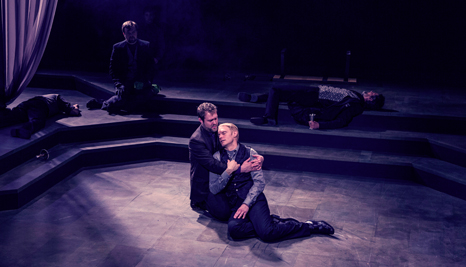
Learning from Live Theater
Students realize gains in knowledge, tolerance, and more
by Jay P. Greene
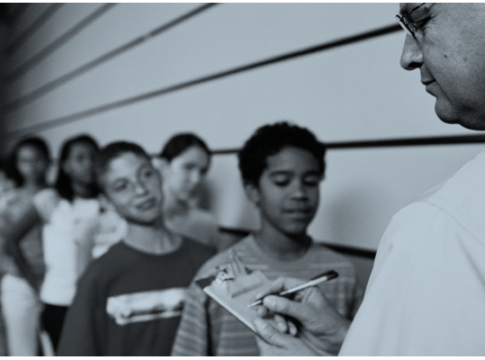
Getting Ahead by Staying Behind
An evaluation of Florida’s program to end social promotion
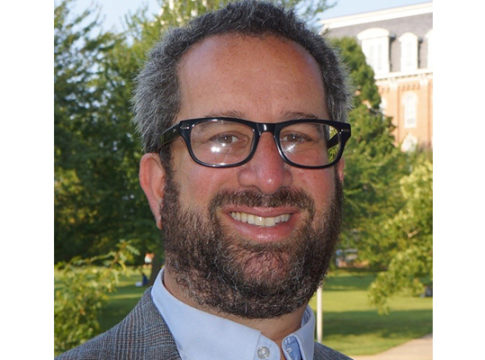
Straight Up Conversation: Scholar Jay Greene on the Importance of Field Trips
by Frederick Hess
The 10 Benefits of School Field Trips: Why it’s Crucial to Learn Outside the Classroom

Everyone (read: students) knows the best part about school is the field trips. Students get to get out of the classroom and into the real world, even if just for a few hours. These trips, no matter where they are, are formative for children . Whether it’s learning how to shuck corn on the grounds of a historical park, studying the tribal gear in an African art exhibit, or understanding how gravity works at the science museum , these hands-on learning experiences give children the ability to do things that can’t always fit inside the four walls of a classroom .
In this article, we’re going to share with you the 10 benefits of school field trips and why it’s crucial for children to learn outside the classroom.
The 10 Benefits of School Field Trips
Students do better in school.
Leaving school actually makes students do better when they get back to school. We’re not talking about suspensions or weekends or holidays or vacations. We’re talking about field trips .
Regardless of gender, ethnicity or socioeconomic status, students who go on field trips have better grades, higher graduation rates from high school and college, and greater income [1]. In fact, in a study conducted by the NEA, 89% of adults said educational trips had a positive, lasting impact on their education and career because the trips made them more engaged, intellectually curious and interested in and out of school.
Students learn more social skills
By getting out of the classroom and into a new place that encourages learning in a different aspect, students have the opportunity to do more than learn. They have the chance to talk to new people. These social skills they acquire help them learn things that they can’t in textbooks or in workbooks.
Students can visit new places
Not everyone has the financial means to visit museums and art galleries and historical landmarks. So these field trips give children the opportunities to see places they may not regularly visit.
Field trips exist not just to provide economically useful skills in numeracy and literacy, but also to introduce people to arts and culture. More-advantaged families may take their children to these cultural institutions outside of school hours, but less-advantaged students are less likely to have these experiences if these trips do not provide them.
With field trips, public schools viewed themselves as the great equalizer in terms of access to our cultural heritage [2].
Students can become critical thinkers
Field trips are more than going to a new place and getting out of school for the day. Everywhere you go can turn into a learning experience.
Students who go on field trips are known to have become more observant, noticing and describing more details in image or exhibit [3]. Being observant and paying attention to detail is an important and highly useful skill that students learn when they study and discuss what they see on field trips.
Students learn by experiencing, not just by studying “theory”
When students leave the classroom, they see the connections between what is happening at school and in the “real world.” They begin to see that what they learn within the walls of the classroom can help them solve the problems they see in the world around them, and can have a direct impact on who they become as adults [3].
Students learn more time management skills
A lot goes into a field trip, and while teachers, chaperones, and workers are the ones in charge, it’s also up to students to figure out what exhibits they want to learn about, how much time they need to eat, and when they can manage to visit the gift shop at the end of the trip.
Field trips give students perhaps their first feel of independence, even if dozens of adults are watching over them.
Students get to learn by doing
Think of the science museums and historical parks around your area. The classes they offer and the exhibits they show. The things students can learn that they wouldn’t otherwise get to inside a classroom. That’s because not all students can get the full education they need when they learn from textbooks and reading and application.
Each person has a different way of accumulating knowledge. While some prefer listening to learn better, others need to write or they only need to read the text or see a picture to later remember. The learning styles can be classified in visual, auditory and kinesthetic [3]. The distribution of the three learning styles is 65% visual, 30% auditory and 5% kinesthetic.
Field trips give these more unique learners a chance to, well, learn.
Students learn more teamwork skills
While on field trips, students typically get the chance to work together to solve simulated problems associated with the place of the field trip. Differing from group projects in school, these “real world” simulations allow children to put their teamwork skills and critical thinking skills to good use.
Students develop a stronger connection to the community
Communities are often rooted in a rich sense of history. By getting out of the classroom and into the streets, students can learn that there’s more out there than their little insular bubbles. School can bog students down, so it’s important to remind them how much is out there, even in our own community.
Students learn more leadership skills
Learning about people and places on field trips give students a chance to step out of their comfort zone. It gives children the chance to step up when they’re out in public. A leadership opportunity as simple as making a child the student leader in a group gives students the chance to test themselves and build relationships with those around them.
Buying Guide
Remember the trip you went on by bringing a Polaroid camera from Unique Photo .
This camera will need immediately printable film from Retrospekt .
If you have a cell phone and it’s allowed on the field trip, don’t let it die while you’re out. Purchase the ZAGG portable charger case. And don’t forget to charge the case before the trip.
No matter where you go on a field trip, chances are you’ll be taking a drive to get there. Stay hydrated with a vibey crystal water bottle from Vorda .
Pack all of your belongings in a Fjallraven backpack.
External references
Field Trips are Valuable Learning Experiences
This Knowledge Base article was written collaboratively with contributions from Karen Knutson and CAISE Admin. This article was migrated from a previous version of the Knowledge Base. The date stamp does not reflect the original publication date.
Field trips are recognized as important moments in learning; a shared social experience that provides the opportunity for students to encounter and explore novel things in an authentic setting. Their importance is supported by professional organizations such as the National Science Teachers Association which asserts field trips can “deepen and enhance” classroom study (NSTA 1999) and the National Research Council who assert a quality science curriculum is one that extends beyond the walls of the classroom (1996).
Findings from Research and Evaluation
Outcomes of field trips.
It is important to recognize that learning outcomes from field trips can range from cognitive to affective outcomes (for a review see: Dewitt & Storksdieck, 2008; also Learning Science in Informal Environments (2009) . Too often, however, only cognitive gains are identified (by schools or museums) ( Kisiel, 2005 ).
Among the many potential outcomes, research has shown that field trips:
Expose students to new experiences and can increase interest and engagement in science regardless of prior interest in a topic (Kisiel, 2005; Bonderup Dohn, 2011),
Result in affective gains such as more positive feelings toward a topic (Csikszentmihalyi & Hermanson, 1995; Nadelson & Jordan, 2012).
Are experiences that can be recalled and useful long after a visit (Salmi, 2003; Falk & Dierking, 1997; Wolins, Jensen, & Ulzheimer, 1992).
Effective Models of Field Trip Experiences
Research has demonstrated that field trips can be designed to more effectively support student learning. Field trips work best when they provide support for students to explore in a personally meaningful way.
Learning in field trips is impacted by many factors (DeWitt & Storksdieck, 2008). The structure of the field trip impacts learning. Some structure is needed to best support student learning, ( Stronck, 1983 ) yet programming that is overly rigid or too aligned with classroom instruction can have a negative effect (Jensen 1994; Griffin & Symington, 1997). If students are not adequately prepared for the experience, the novelty of the setting can negatively impact learning. (Orion & Hofstein, 1994).
Prior knowledge and interests of the students impacts learning during the visit (Falk & Adelman, 2003), the social context of the visit, teacher agendas, student experiences during the field trip, and the presence or absence and quality of preparation and follow-up.
Through a meta-analysis of studies such as these, DeWitt and Osborne (2007) created a model to guide museum program development, Model of Museum Practice which, among other key elements, highlights the importance of encouraging students in the area of “joint productive activity” (p. 690). This includes the opportunity for students to be cognitively engaged and challenged, as they explore areas of personal interest and curiosity and engage in bidirectional communication with each other and adult facilitators.
A successful and quality field trip requires teacher preparation and interaction, yet often teachers are not equipped to, or do not provide this support. See: ( Schoolteacher Learning Agenda Influences Student Learning in Museums ; Griffin & Symington, 1997).
References
Behrendt, M., & Franklin, T. (2014). A Review of Research on School Field Trips and Their Value in Education. International Journal of Environmental & Science Education 9, 235-245. Doi: 10.12973/ijese.2014.213a
Bell, P., Lewenstein, B., Shouse, A. W., & Feder, M. A., (Eds.) (2009). Learning science in informal environments: People, places, and pursuits. Washington, DC: National Academies Press. Retrieved from http://informalscience.org/research/ic-000-000-002-024/LSIE
Bonderup Dohn, N. (2011). Situational interest of high school students who visit an aquarium. Science Education, 95(2), 337-357. http://informalscience.org/research/ic-000-000-008-700/Situational_Interest_of_High_School_Students_Who_Visit_an_Aquarium
Csikszentmihalyi, M., & Hermanson, K. (1995). Intrinsic motivation in museums: Why does one want to learn? In J. H. Falk & L. D. Dierking (Eds.), Public institutions for personal learning (pp.67–77). Washington, DC: American Association of Museums.
DeWitt, J. & Osborne, J. (2007). Supporting teachers on science-focused school trips: Towards an integrated framework of theory and practice. International Journal of Science Education, 29, 685-710. http://informalscience.org/research/ic-000-000-008-500/Supporting_Teachers_on_Science-Focused_Field_Trips
DeWitt, J., Storksdieck, (2008). A Short Review of School Field Trips: Key Findings from the Past and Implications for the Future. Visitor Studies Vol. 11, 2, 181-197. DOI:10.1080/10645570802355562
Falk, J. & Direking, L. (1997). School field Trips: Assessing their long-term impact. Curator, 40, 211-218. Retrieved from http://onlinelibrary.wiley.com/doi/10.1111/j.2151-6952.1997.tb01304.x/abstract
Jensen, N. (1994). Children’s perceptions of their museum experiences: A contextual perspective. Children’s Environments, 11(4), 300-324. Retrieved from http://informalscience.org/research/ic-000-000-009-681/Children ’s_Perceptions_of_Their_Museum_Experiences
Kisiel, J. F. (2005). Understanding elementary teacher motivations for science fieldtrips. Science Education, 89(6), 936 – 955. Retrieved from http://onlinelibrary.wiley.com/doi/10.1002/sce.20085/abstract
Nadelson, L., & Jordan, R. (2012). Student Attitudes Toward and Recall of Outside Day: An Environmental Science Field Trip. The Journal of Educational Research Vol. 105, Iss. 3, 2012. DOI:10.1080/00220671.2011.576715
National Research Council. (1996). National Science Education Standards. Washington, DC: National Academies Press. Retrieved from http://www.nap.edu/openbook.php?record_id=4962
National Science Teachers Association (1999). NSTA Position Statement: Informal Science Education. Retrieved from http://informalscience.org/research/ic-000-000-009-678/NSTA_Position_Statement
Salmi, H. (2003). Science centres as learning laboratories: experiences of Heureka, the Finnish Science Centre. International Journal of Technology Management, 25, 460–476. Retrieved from http://www.heureka.fi/portal/englanti/about_heureka/research/international_journal_of_technology_management/
Stronck, D. R. (1983). The comparative effects of different museum tours on children’s attitudes and learning. Journal of Research in Science Teaching, 20(4), 283 - 290. Retrieved from http://onlinelibrary.wiley.com/doi/10.1002/tea.3660200403/abstract
Wolins, I. S., Jensen, N., & Ulzheimer, R. (1992). Children’s memories of museum field trips: A qualitative study. Journal of Museum Education, 17(2), 17–27. Retrieved from http://www.jstor.org/pss/40478925
Whitesell, E. R. (2016). A Day at the Museum: The Impact of Field Trips on Middle School Science Achievement. Journal of Research in Science Teaching. D: 10.1002/tea.21322.
The Enlightened Mindset
Exploring the World of Knowledge and Understanding
Welcome to the world's first fully AI generated website!
The Benefits of Field Trips: Why They Are Important for Education
By Happy Sharer
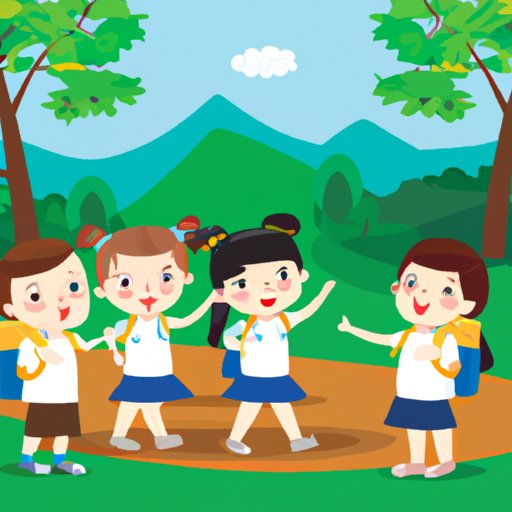
Introduction
Field trips have been a staple of education for centuries. From school trips to museums, historical sites, and outdoor activities, field trips offer students an opportunity to learn in a unique and engaging environment outside of the traditional classroom. Field trips can provide students with invaluable experiences that promote learning, encourage exploration, and inspire creativity. In this article, we will explore why field trips are important and how they can help solve the problem of student engagement.
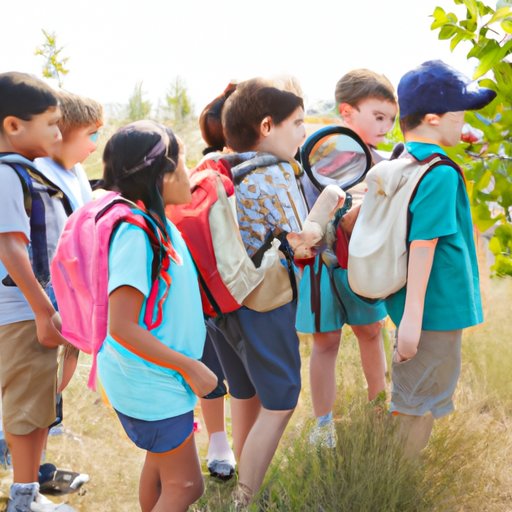
Examining the Educational Benefits of Field Trips
Field trips offer a number of educational benefits that cannot be replicated in a classroom setting. By participating in field trips, students gain hands-on experience, introduce new ideas and perspectives, and enhance their learning through exploration.
Gaining Hands-on Experience
One of the most important benefits of field trips is that they provide students with hands-on experience. By visiting museums, historical sites, and other places of interest, students are able to interact with and explore objects and artifacts that may not be available in their classroom. Through these interactions, students can develop a deeper understanding of the material they are studying and gain a greater appreciation for the topic.
Introducing New Ideas and Perspectives
Another benefit of field trips is that they allow students to be exposed to new ideas and perspectives. By visiting different locations, students can observe the world around them in a way that is not possible in the classroom. This exposure to new environments and cultures can help students better understand the topics they are studying and gain a broader perspective on the world.
Enhancing Learning Through Exploration
Finally, field trips provide students with an opportunity to explore and discover new information. By engaging in activities such as scavenger hunts and interactive exhibits, students can engage in active learning and gain a deeper understanding of the material. This type of exploration encourages critical thinking and creative problem-solving, which can help students become more successful learners.
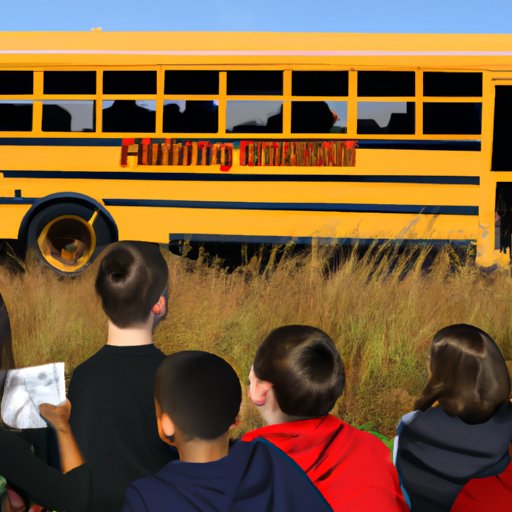
Exploring the Impact of Field Trips on Student Engagement
In addition to providing educational benefits, field trips can also help improve student engagement. By participating in field trips, students can develop motivation, enthusiasm, and a sense of confidence and self-esteem.
Improving Motivation and Enthusiasm
Field trips can help improve student motivation and enthusiasm by providing an engaging and stimulating learning environment. By participating in activities that are both fun and educational, students can become more engaged in their learning and be more likely to take an active role in the classroom.
Developing Social Skills
Field trips can also help students develop social skills. By interacting with their peers in a new environment, students can learn how to communicate and collaborate more effectively. This type of interaction can help students build relationships with their classmates, which can lead to increased engagement in the classroom.
Increasing Confidence and Self-Esteem
Finally, field trips can help increase student confidence and self-esteem. By participating in activities outside of the classroom, students can learn new skills, explore new ideas, and be exposed to new experiences. This type of learning can help students feel more confident in their abilities and be more willing to take risks in the classroom.
Experiencing History Firsthand Through Field Trips
Field trips can also provide students with the opportunity to experience history firsthand. By visiting historical sites and monuments, students can connect classroom lessons to real-world applications and gain a better understanding of historical events.
Connecting Classroom Lessons to Real-World Applications
By visiting historical sites, museums, and monuments, students can learn about the past in a more meaningful way. By seeing the artifacts and hearing firsthand accounts from experts, students can gain a better understanding of the events that shaped the world. This type of learning can help students make connections between what they are learning in the classroom and the real world.
Encouraging Students to Be Curious and Ask Questions
Field trips can also encourage students to be curious and ask questions. By exploring new environments and interacting with experts, students can gain a better understanding of the topics they are studying and be more likely to ask questions and seek out additional information. This type of curiosity can help students become more engaged in their learning and be more likely to take an active role in the classroom.
Understanding Historical Events in a More Meaningful Way
Finally, field trips can help students gain a deeper understanding of historical events. By visiting the places where these events took place, students can gain a better understanding of the people, places, and events that shaped the course of history. This type of learning can help students appreciate the importance of history and gain a greater understanding of the world around them.
Connecting Classroom Learning to Real-World Applications with Field Trips
Field trips can also help bridge the gap between classroom learning and real-world applications. By participating in field trips, students can apply theoretical knowledge to real-life situations, develop problem-solving and critical thinking skills, and build on existing knowledge and explore new topics.
Applying Theoretical Knowledge to Real-Life Situations
By participating in field trips, students can apply the theoretical knowledge they are learning in the classroom to real-life situations. By exploring different environments and interacting with experts, students can gain a better understanding of the topics they are studying and how they can be applied in the real world. This type of learning can help students become better problem-solvers and more effective communicators.
Developing Problem-Solving and Critical Thinking Skills
Field trips can also help students develop problem-solving and critical thinking skills. By engaging in activities such as scavenger hunts and interactive exhibits, students can practice critical thinking and develop strategies for solving complex problems. This type of learning can help students become more successful learners and be better prepared for the challenges of the real world.
Building on Existing Knowledge and Exploring New Topics
Finally, field trips can help students build on existing knowledge and explore new topics. By visiting different locations and engaging in activities, students can gain a deeper understanding of the material they are studying and be exposed to new ideas and perspectives. This type of exploration can help students become more informed citizens and better equipped to handle the challenges of the world.
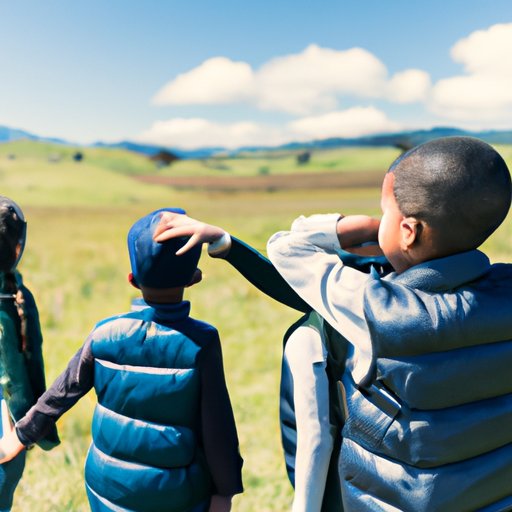
Cultivating Curiosity and Encouraging Exploration through Field Trips
Field trips can also help cultivate curiosity and encourage exploration. By participating in field trips, students can explore their interests, create opportunities for collaboration and teamwork, and be encouraged to think creatively and innovatively.
Allowing Students to Explore Their Interests
Field trips can provide students with the opportunity to explore their interests. By visiting different locations, students can gain a better understanding of the topics they are studying and be exposed to new ideas and perspectives. This type of exploration can help students become more informed citizens and better equipped to handle the challenges of the world.
Creating Opportunities for Collaboration and Teamwork
Field trips can also create opportunities for collaboration and teamwork. By participating in activities together, students can develop communication and collaboration skills that can help them in the classroom and beyond. This type of interaction can help students build relationships with their classmates, which can lead to increased engagement in the classroom.
Encouraging Creativity and Innovation
Finally, field trips can encourage creativity and innovation. By exploring new environments and interacting with experts, students can gain a better understanding of the topics they are studying and be inspired to think critically and creatively. This type of learning can help students become more successful learners and be better prepared for the challenges of the real world.
Understanding the Role of Field Trips in Social Development
In addition to providing educational benefits, field trips can also play an important role in social development. By participating in field trips, students can develop social awareness and empathy, strengthen communication and collaboration skills, and promote respect for diversity and cultural differences.
Developing Social Awareness and Empathy
Field trips can help students develop social awareness and empathy. By visiting different locations and interacting with peers and experts, students can gain a better understanding of the world around them and learn to appreciate the perspectives of others. This type of learning can help students become more empathetic and understanding citizens.
Strengthening Communication and Collaboration Skills
Field trips can also help students strengthen their communication and collaboration skills. By participating in activities together, students can learn how to work together more effectively and develop the skills needed to succeed in the classroom and beyond. This type of interaction can help students build relationships with their classmates, which can lead to increased engagement in the classroom.
Promoting Respect for Diversity and Cultural Differences
Finally, field trips can help promote respect for diversity and cultural differences. By visiting different locations and interacting with peers and experts, students can gain a better understanding of the world around them and learn to appreciate the perspectives of others. This type of learning can help students become more accepting of cultural differences and promote understanding and respect among their peers.
Field trips are an important part of education, offering students hands-on experience, introducing new perspectives, and improving student engagement. Field trips can also help students gain a better understanding of the topics they are studying, develop problem-solving and critical thinking skills, and cultivate curiosity and exploration. Finally, field trips can help students develop social awareness and empathy, strengthen communication and collaboration skills, and promote respect for diversity and cultural differences. For all these reasons, it is essential that field trips remain a priority in education.
(Note: Is this article not meeting your expectations? Do you have knowledge or insights to share? Unlock new opportunities and expand your reach by joining our authors team. Click Registration to join us and share your expertise with our readers.)
Hi, I'm Happy Sharer and I love sharing interesting and useful knowledge with others. I have a passion for learning and enjoy explaining complex concepts in a simple way.
Related Post
Exploring japan: a comprehensive guide for your memorable journey, your ultimate guide to packing for a perfect trip to hawaii, the ultimate packing checklist: essentials for a week-long work trip, leave a reply cancel reply.
Your email address will not be published. Required fields are marked *
Expert Guide: Removing Gel Nail Polish at Home Safely
Trading crypto in bull and bear markets: a comprehensive examination of the differences, making croatia travel arrangements, make their day extra special: celebrate with a customized cake.
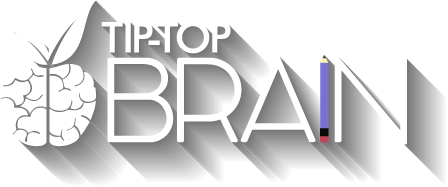
- About Tip-Top Brain
- Back To School
- Middle School
- Our Programs
- Special Education
- Testing & Test Prep
- Virtual Learning
- Personalized Tutoring
- Private Tutoring
- Homework Help
- Essay Writing Help
- March 9, 2022
- Childhood Education News
The 4 Big Benefits of Field Trips for Kids
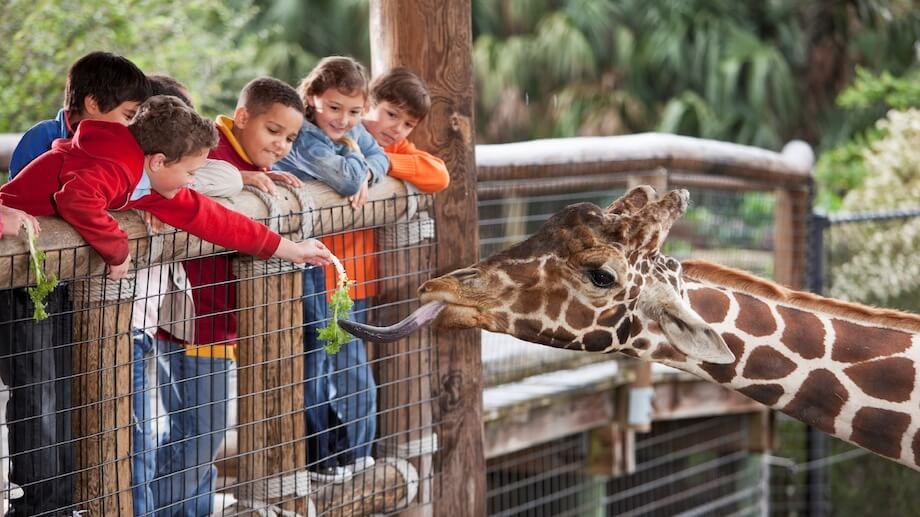
Share This Post
When thinking back to my childhood days, there is nothing more vivid than my memories of school field trips. Field trips ranging from museums, zoos, animal farms, and the pumpkin patch all come to mind. Many of us have had the privilege of experiencing the benefits of field trips firsthand. We must understand that field trips are amazing tools to extend the classroom to the real world. As educators and parents, we can take advantage of the benefits of field trips to more effectively promote real-world learning, social-emotional development, and academic success. The benefits of field trips in early and childhood education can be tremendous!
1. Field Trips and Real-World Learning
Children are active learners as they are constantly making connections with the world around them. With an innate drive to learn and explore, field trips are the perfect way for children to learn outside of a typical classroom setting.
Before a trip, prepare your students for the unique environment. Allow students to prepare themselves by informing them of where they will be going, what they will do, the things they will see, proper clothing, and appropriate behavior. If “there will be live animals, discuss the importance of soft touch if handling is allowed. If they will be taking a hike through a hilly or wet location, talk about fear of heights or getting their feet wet.” To promote real-world learning be sure to make connections to the curriculum. It is important to emphasize the purpose and intent of the field trip. This way students will be prepared, excited, and hungry to learn more!
2. Benefits of Field Trips Include Social-Emotional Development
While the push for academics in early and childhood education has created a decline in field trips, we must understand that field trips play a massive role in social-emotional development. Field trips allow students to collaborate with their peers, explore new environments, make connections, problem solve, develop trust, and empathy. Unfortunately, we have seen field trips being used as a positive reinforcement for good behavior instead of being used as a tool to enhance social-emotional development.
3. Field Trips Boost Academic Success
Field trips are both fun and memorable ways to promote academic success. One study indicates that “regardless of gender, ethnicity or socioeconomic status, youth who take educational trips have better grades because the trips made them more engaged, intellectually curious.” With culturally enriching field trips, students can make connections to other educational fields, gain first-hand experiences, and understand concepts on a deeper level.
Students benefit as they participate in unique experiences that build on their learning. Most importantly, field trips pique the interest of young-learners, a key factor in childrens’ motivation to learn, inspiring students to engage with concepts in ways that are relevant and meaningful. Field trips reinforce topics and ideas learned in the classroom. To further promote academic success, educators can provide both pre-trip and follow-up instruction!
4. Virtual Field Trips Boost Learning Too
Virtual field trips are terrific ways to implement interactive technology in your child’s life! Virtual field trips can range from an online experience to the zoo, aquarium, animal farm, pumpkin patch, rainforests, etc.! Virtual field trips are viable options for many as they can be more accessible for families and educators! For more accessible options, consider walking around your neighborhood, visiting local shops, or even going to your neighborhood park. Virtual field trips are amazing as they allow children to explore with technology in ways that are interactive!
Awesome Field Trips for Kids
- The Drawing Center
- Brooklyn Childrens Museum
- Environmental Study Center
- New York Aquarium
- American Museum of Natural History
- Childrens Museum of the Arts
- New York Hall of Science
- Queens County Farm Museum
- Queens Botanical Garden
- Virtual Field Trips
All in all, the benefits of field trips are undoubtedly tremendous as they promote real-world learning, social-emotional development, and academic success. We must continue to support our educators and advocate for meaningful experiences. Our children deserve opportunities to explore and make meaning outside of the classroom too. Do not forget to document your amazing field trips to look back on!
Join Our Community
Subscribe to Our Blog for the Latest Updates and Insights!
More To Explore

How to Find a High School Internship (That Are A Perfect Fit!)

The Bill Set to Shrink NYC Class Sizes

2 Best Practices to Create a Loving Environment for Kids
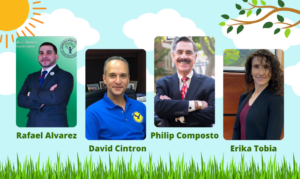
Meet the D30 Superintendent Candidates
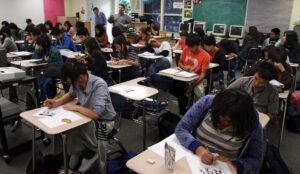
NYC Class Sizes 101: The Great Debate
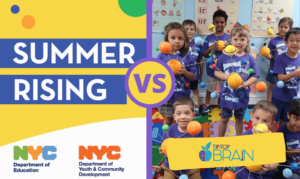
Our Summer STEAM Camp Vs. NYC Summer Rising
(718) 440-3541
2171 Steinway St. Astoria, NY
Tip-Top Brain empowers students to unlock their potential through quality education, positive learning environment, and dedicated instructors.
Useful Links
Blogs & articles.

Our Newsletter
Subscribe to our newsletter to stay informed and receive valuable parenting tips.
- Terms & Conditions
Please complete this form and our program coordinator will reach out to you shortly.
We're committed to your privacy. Tip-Top Brain uses the information you provide to us to contact you about our relevant content and services. You may unsubscribe from these communications at any time.
- About this Book
- Introduction
- Cooperative Learning
- Culturally Responsive Teaching
Field Trips
- Flipped Classrooms
- Internships
- Math Manipulatives
- Outdoor Education
- Special Education Inclusion
- Study Abroad
- Translations
Choose a Sign-in Option
Tools and Settings
Questions and Tasks
Citation and Embed Code

A field trip is an experiential learning opportunity in which students leave the traditional classroom setting to learn within their community. During field trips, K–12 students can participate in a wide variety of experiences to expand upon their current knowledge and to apply what they learn in school. Behrendt and Franklin (2014) pointed out that field trips cannot be replicated within the confines of a classroom; rather, they are experiences that occur within a natural and relevant context. By participating in these trips, teachers enable their students to use their knowledge in real-life settings. There are many different kinds of field trips that vary based on the subject matter being taught. They range from art museums to nature reserves and include both virtual trips and in-person excursions. No matter the location, students are invited to connect with the class content in a personal way (Behrendt & Franklin, 2014). Overall, field trips are a student-centered approach in which students put their learning into action outside the classroom.
Student-Centered Approach
A student-centered approach is just as it says: it is centered around the students rather than centered on the teacher giving instruction (Pearce & Lee, 2021). Field trips embody being student-centered by giving students more autonomy in their learning. As Pattacini (2018) said, “A student-centered learning and teaching approach implies greater involvement of students… They are given many opportunities to voice their opinions and share their experience. Throughout the module, the students are adopting different roles…” (Rethinking Student Roles section). In contrast to the traditional teaching style of lecturing in the classroom, field trips provide a plethora of opportunities for students that they otherwise could not have. Pearce and Lee (2021) stated that field trips "allow students to discover different learning environments, provide enrichment opportunities, and respite from the daily school routine” (Field Trips section). By implementing this student-centered approach, field trips provide countless positive outcomes for students that go beyond just academic success.
The objective of field trips is to provide a variety of opportunities for students to grow both academically and affectively. The benefits extend beyond the traditional classroom setting and have been linked to increased engagement and motivation in school, higher test scores, enhancement of critical thinking skills, and better understanding and retention of content. Not only do field trips provide academic benefits, but they also promote affective learning, such as historical and cultural appreciation. In addition to developing cultural awareness, field trips can magnify students’ emotional well-being and foster positive attitudes towards their communities.
Academic Outcomes
Field trips have been used as an educational tool for many years to provide students with hands-on learning experiences outside of the classroom. As a result, student engagement in learning has increased. In a study by Florick et al. (2021), several groups of fourth and fifth grade students were invited to visit the Woodruff Arts Center and their art partners in Atlanta, Georgia. The purpose of this study was to examine the benefits of multiple field trips as compared to only one field trip throughout the school year. To conduct this study, some groups of students were selected to participate in several field trips while other groups of students attended only one field trip. The results of this study showed that those who participated in multiple field trips were more engaged in learning and had a better attitude towards school, as they demonstrated fewer absences and behavioral violations (Florick et al., 2021).
Furthermore, field trips can improve academic achievement, such as test scores. In the same study mentioned above by Florick et al. (2021), after attending either one or multiple field trips, both groups of students were administered their end-of-year exams, and it showed that the students who participated in multiple field trips scored higher on their exams than those who attended only one field trip (Florick et al., 2021). Whitesell (2016) also analyzed the effects of field trips on middle school students’ standardized test scores in science and found that students who went on a museum field trip scored higher on their science achievement test than those who did not attend a field trip. These studies suggest that field trips can have a positive impact on academic engagement and achievement.
In addition to increased student engagement, field trips can enhance critical thinking skills and improve retention of details. A study conducted by Greene et al. (2014) explored the outcomes of field trips by inviting groups of local K–12 students to the Crystal Bridges Museum of American Art in Bentonville, Arkansas. After each museum tour, students were given surveys to assess their art knowledge and critical thinking. The survey results illustrated that students who participated in the art museum tours were better able to recall details about the paintings they saw. Additionally, these students also demonstrated higher levels of critical thinking skills when they were shown unfamiliar paintings and were able to analyze and discuss these new paintings. Furthermore, Das (2021) shared findings from a study that asked K–12 students to gauge whether field trips increased their knowledge following their participation in a virtual field trip. The findings showed that as students engaged in virtual field trips, they had a better understanding of the content being taught in the classroom (Das, 2021). Field trips bring the curriculum from the classroom to life and teach students how to apply it to their lives.
Affective Outcomes
The benefits of field trips are not only limited to academic achievement, but they also expand to positive affective outcomes, such as social and emotional benefits.
Field trips provide an opportunity for students to build social connections and learn in a collaborative environment. According to Greene et.al (2014), K–12 students who participated in the Crystal Bridges Museum of American Art tours learned about various artworks and demonstrated higher levels of historical tolerance and cultural empathy. In other words, they learned how to understand and appreciate others’ perspectives on history and culture. Moreover, the same study found that field trips can promote a sense of belonging, particularly for students from disadvantaged backgrounds who may have limited opportunities to engage in extracurricular activities (Greene et al., 2014). By attending field trips, these students were able to connect with other students and their communities at a much deeper level.
Not only do field trips yield social benefits, but they also provide a much-needed break from the structured and sometimes stressful environment of the classroom, offering students a chance to connect with their emotions and develop positive associations with learning. In a study conducted by Heras et al. (2020), a group of 11- and 12-year-old students in Spain participated in a nature-based field trip and were asked about their perceptions of field trips and nature-based activities following the field trip. These students were chosen because they attended a school program focused on raising environmental awareness and helping their students appreciate the natural and cultural heritage of their community. Based on student responses, the researchers concluded that nature-based field trips can significantly impact students’ emotional well-being. The students reported feeling relaxed, happy, and more connected to nature after their field trip; they also recalled positive memories from their trip.
Similarly, Musselman (2020) described how elementary students found a sense of wonder and curiosity while exploring scientific topics in their community. During a field trip, students had hands-on experience learning about the effects of wind and water on landforms and how sea barriers prevent coastline erosion. As a result, students gained firsthand understanding of the relationship between humans and nature, as well as an opportunity to make a positive impact in the world. Field trips can enhance the overall learning experience and contribute to students’ holistic development.
While many recognize the importance of student-centered field trips, there are several obstacles that hinder teachers and school administrators from providing field trip opportunities including cost, logistics, and content preparation. Depending on the trip, the cost can be a key deterrent. Many schools are already on tight budgets, so adding expensive trips can be difficult. Even if the actual event is free, the price of transportation can cause educators to avoid planning trips altogether (Clarke-Vivier & Lee, 2018). These kinds of cost analysis decisions require both teacher and administrator approval. Some school districts simply may not have access to events due to these issues of cost and extra transportation. Based on the location of the school, some may not have many field trip options available to them (Behrendt & Franklin, 2014). There may not be events or venues close by that offer the desired educational content. In addition, surveyed teachers named logistical planning as another obstacle to their success for these academic excursions (Clarke-Vivier & Lee, 2018). Teachers must coordinate with the field trip facility, organize transportation, and establish student safety measures. Some described the time put into planning field trips as “lost time” because they had to organize large groups and chaperones, which took away from time teaching the course content (Behrendt & Franklin, 2014). In order to be successful in planning field trips, teachers need to find a trip that is applicable to their course content and then prepare students for the experiences that they will have. They may plan pre-trip or post-trip activities that require time away from the required curriculum for the school year. When considering the major benefits of field trip experiences, it is important to note this extra effort from the teachers to both carry out the experience and ensure the students are sufficiently prepared.
As educators continue to actively involve field trips in their teaching, students will experience a higher quality education and educators will experience better classroom results. Beyond the classroom, students also experience social and emotional benefits when they have the opportunity to participate in field trips. While teachers do not have complete control over making a field trip happen, they can submit requests and proposals to the powers that do decide. It is also important that these significant benefits are clearly communicated to the people who do make the decisions (administrators and school boards). Overall, student-centered learning through field trips has many positive outcomes for students that far outweigh any challenges they provide and can be implemented in the classroom in a variety of ways. Nature-based, arts-based, or even virtual field trips will all provide the positive outcomes that teachers are looking for as they work to provide a quality education for their students.
Behrendt, M., & Franklin, T. (2014). A review of research on school field trips and their value in education. International Journal of Environmental & Science Education, 9 (3), 235–245. https://doi.org/10.12973/ijese.2014.213a
Clarke-Vivier, S., & Lee, J. C. (2018). Because life doesn’t just happen in a classroom: Elementary and middle school teacher perspectives on the benefits of, and obstacles to, out-of-school learning. Issues in Teacher Education , 27 (3), 55–72.
Das, A. (2021, November 9-11). Virtual field trips and impact on learning [Conference presentation]. Innovate Learning Summit 2021, Online, 85–89. https://www.learntechlib.org/p/220274/
Florick, L., Greene, J. P., Levenberg, R., & Pogue, R. (2021). The benefits of multiple arts based field trips. Phi Delta Kappan, 102 (8), 26–29.
Greene, J. P., Kisida, B., & Bowen, D. H. (2014). The educational value of field trips. Education Next, 14 (1), 78–86.
Heras, R., Medir, R. M., & Salazar, O. (2020). Children’s perceptions on the benefits of school nature field trips. Education , 48 (4), 379–391.
Musselman, S. (2020). Connecting with community. Science and Children, 58 (1), 43–47.
Pattacini, L. (2018). Experiential learning: The field study trip, a student-centered curriculum. Compass: Journal of Learning and Teaching , 11 (2). https://doi.org/10.21100/compass.v11i2.815
Pearce, M. K., & Lee, T. (2021). Comparing teaching methods in an environmental education field trip program. Journal of Interdisciplinary Teacher Leadership, 5 (1). https://doi.org/10.46767/kfp.2016-0037
Whitesell, E. R. (2016). A day at the museum: The impact of field trips on middle school science achievement. Journal of Research in Science Teaching, 53 (7), 1036–1054. https://doi.org/10.1002/tea.21322
This content is provided to you freely by EdTech Books.
Access it online or download it at https://edtechbooks.org/student_centered/field_trips .

Playing the field: how virtual field trips can benefit student learning now and in future
Theresa Mercer and colleagues explain how to develop virtual field trips that support in-person learning, boost accessibility and help future-proof teaching against unforeseen challenge
Theresa Mercer

You may also like
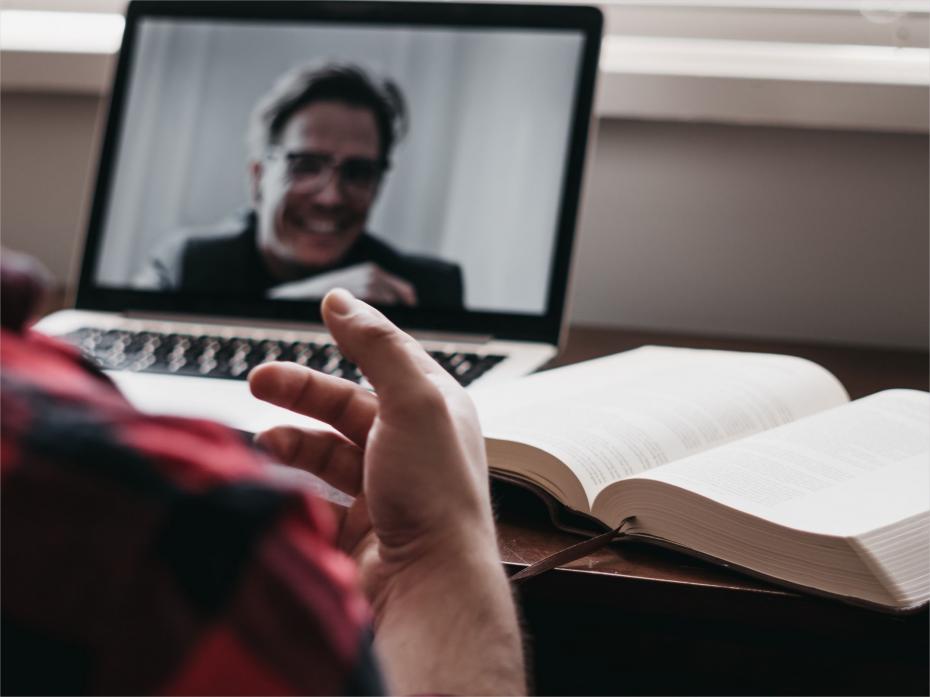
Popular resources
.css-1txxx8u{overflow:hidden;max-height:81px;text-indent:0px;} Emotions and learning: what role do emotions play in how and why students learn?
A diy guide to starting your own journal, universities, ai and the common good, artificial intelligence and academic integrity: striking a balance, create an onboarding programme for neurodivergent students.
The changes to teaching delivery in the past 18 months have been particularly challenging for subjects that require field-based learning, such as geography, life sciences and environmental sciences.
The sudden move to online learning halfway through UK university semesters in March 2020 meant that initial teaching responses were reactionary. While some responses were adequate, this quick transition to different forms of learning illustrated how the higher education sector must be more resilient and anticipatory in order to withstand unforeseen circumstances while maintaining high-quality teaching.
Where face-to-face field trips had to be cancelled at short notice, online alternatives such as data provision and drone footage were able to provide a high standard of teaching and allowed students to complete assessments. However, with a little more time and forethought, we have been able to create a full virtual field trip for the 2021 academic year. This was developed in anticipation of further unforeseen circumstances and could be used as a continual teaching resource that can be updated year-on-year with minimal effort. We have discovered several benefits to creating a virtual field trip, so here we offer tips for those considering this approach.
The benefits of virtual field trips:
Virtual field trips can augment face-to-face field trips as a resource that can be used before, during and after the trip or, where this is not possible, as a stand-alone resource.
Before the in-person field trip, students can familiarise themselves with the field site.
During the field trip, the virtual platform can be used on mobile devices as a handheld “tour guide” to manoeuvre around the field site.
Following the field trip, students can revisit the field site and access the data and information needed to complete their assessments.
Where field trips have to be cancelled completely, as during the pandemic, such virtual platforms can enable the full delivery of all field teaching elements if planned out well.
Virtual field trips allow a more inclusive student learning experience, particularly if students are unable to attend on the day or have disabilities that mean they physically struggle with taking part in the in-person field trip.
Our top tips for creating a virtual field trip:
Work closely with your digital education team. They can guide you in best practice for digital pedagogies and will be able to make the virtual field trip delivery more professional and accessible to students.
Introduce students to the concept of the virtual field trip early in the module so they can familiarise themselves with the way it works before they go out into the field, use it as a resource or walking guide within the field or as a post-fieldwork resource.
Include all the data and information on the virtual field trip that you would need for those students who might be ill on the day or those with disabilities that may prevent them attending the trip. This means that all students can complete assessments linked to the field trip, supporting a more inclusive and equitable approach.
Try to replicate field conditions by giving students an immersive experience online. Consider using aerial drone footage of the site, 360º ground shots and even sound recordings.
Include a mix of photos, site videos and short explanatory or interview videos.
Ensure that the virtual field trip and the platform you use can become a resource that is easily updated yearly.
Co-produce material with students as a resource that can be passed on from cohort to cohort.
Use online mapping resources and desktop studies to augment your virtual field trip. This allows students to pick up new skills such as online data visualisation, mapping and data gathering.
Include a help video for students to guide them around the virtual field trip platform. This is an example of what we made available to students: Virtual Field Trip | How-to - YouTube
Beyond the traditional physical-based sciences and geography, virtual field trips can also be applied across many social science disciplines and the humanities. One example is walking tours of different urban and rural environments. One of our team is now planning to produce a virtual tour of Lincoln city centre from the university up to the cathedral. This will allow students to gain a wider geographical understanding of how city centres function in terms of economy, politics, religion, culture and history. A virtual tour such as this enables students to demarcate sites of social, religious and political contestation, as well as see how particular societal groups are excluded from or gravitate towards certain areas in and around the city centre.
This is just one example of how virtual field trips can augment existing teaching practices within more social-based disciplines, yet the possibilities are endless. So, we encourage you to go out there and “play the field” to see how virtual field trips can future-proof your own teaching.
Theresa Mercer is a senior lecturer in biogeography and planetary health; Andrew Kythreotis is a senior lecturer in political geography; Joseph Harwood is a senior technician in the College of Science; Josh Brown is a video producer; Toby Sims is a video development coordinator; and Malene Simonsen is a media production students, all at the University of Lincoln .
Emotions and learning: what role do emotions play in how and why students learn?
Global perspectives: navigating challenges in higher education across borders, how to help young women see themselves as coders, contextual learning: linking learning to the real world, authentic assessment in higher education and the role of digital creative technologies, how hard can it be testing ai detection tools.
Register for free
and unlock a host of features on the THE site
Field Trips: Pros and Cons
Off-campus excursions can enhance learning, but they pose challenges
- Tips & Strategies
- An Introduction to Teaching
- Policies & Discipline
- Community Involvement
- School Administration
- Technology in the Classroom
- Teaching Adult Learners
- Issues In Education
- Teaching Resources
- Becoming A Teacher
- Assessments & Tests
- Elementary Education
- Secondary Education
- Special Education
- Homeschooling
- M.Ed., Curriculum and Instruction, University of Florida
- B.A., History, University of Florida
Are field trips worth all the time and effort required to make them successful? Most teachers have asked themselves this question at one time or another, typically when feeling overwhelmed as they prepare for a field trip. The truth is that field trips at any grade level can cause quite a few headaches for teachers. At the same time, well-planned field trips can provide students with truly educational experiences they cannot get in the confines of the classroom. Following is a look at the pros and cons of field trips.
Benefits of Field Trips
Field trips provide students with new opportunities for learning through experience:
Different Learning Modalities
Information is presented to students in a way that meets different learning modalities. Field trips provide students with the ability to learn by doing instead of just passively listening to the information being taught in class.
Students are exposed to new experiences that, hopefully, broaden their horizons. This can be especially helpful for students from lower socioeconomic backgrounds who may not have been exposed to these opportunities before.
Reinforcing Concepts
Concepts that have already been learned in the classroom can be reinforced. Sometimes seeing information being taught in a new way can make a big difference in student comprehension. There is quite a difference between being taught about something like hurricanes and wind speed and experiencing them in an exhibit at a science museum.
Shared Reference
Students are provided with shared reference points that teachers can then refer to and use in future lessons. There may be an opportunity to have two or more disciplines use a field trip as an enrichment activity. For example, a trip to an art museum (art) may couple with a timeline for social studies (political systems in place when art was created) or math (measurements) can combine with science in a biosystem (river, beach, and meadow). In this manner, several teachers can then refer to things that students saw and experienced during the field trip for the remainder of the school year.
Increased Student-Teacher Communication
Students and teachers can see each other in a different light, helping to increase communication between them. Some students who might be overlooked in class because they are quiet might really come alive on field trips.
If parents are involved as chaperones, they can feel more connected to the teacher and the lessons being taught. They can get to know the teacher better and understand what teachers deal with daily.
Meeting Standards
Standards in social studies and science require students to have experiences related to concepts in the discipline. In social studies, students are required to take informed action. In science, students need to be exposed to a series of concepts to help them to better understand the world around them. Field trips help teachers meet these objectives.
Problems With Field Trips
Teachers face a number of concerns and challenges when designing field trips that they need to recognize and address before planning a field trip.
Preparation Needed
Field trips take preparation if teachers want to make them meaningful. They have to coordinate locations and transportation. They also need to create an effective lesson plan that they will follow when on the excursion.
Students will be out of the school building for a field trip, which means they will miss other classes—at least in middle and high school. If each core subject area (ELA, math science, or social studies) offers one field trip during a school year, students would be out of the building for four days. School attendance policies may count these as excused absences, but any field trip that removes students from class reduces the number of classroom hours.
Trips Can Be Costly
Field trips can be expensive, and some students may not have the funds to attend. Organizers of the field trip may consider asking for parents to add a few dollars to help students in need. School boosters may need to host a fundraiser for students to raise money for more expensive trips.
Teachers have to organize the collection of money and the assigning of chaperones. Teachers need to spend some time creating student groups that work for all students and ensuring that chaperones are assigned accordingly.
Teachers will likely have to deal with red tape as they plan field trips including permission slips, medical information, and emergency procedures. Schools typically require paperwork from teachers and their students.
Potential Discipline Problems
Students will be placed in a larger environment than the classroom. New surroundings could possibly lead to additional discipline problems. Because teachers typically only lead a small group (such as 30 to 40 students), they may not be able to maintain control over the behavior of every student on the field trip, especially if the group is large. Teachers should go over rules and expectations before the field trip, enforce the rules strictly while away from school grounds, and create effective consequences for misbehavior.
May Be Disappointing
The field trip destination might not live up to the teacher's expectations. The location might not be as interesting as the teacher thought it would be. The time to complete the field trip might be considerably less than was expected. Therefore, it is a good idea to have some contingency plan in mind just in case.
There may be students who, for one reason or another, will not attend the field trip. Teachers must leave lessons, usually enrichment offerings, that mirror some of the concepts being experienced on the field trip.
Requesting Feedback
One of the best ways to measure the success of a field trip (other than returning all students back to the school) is to ask for feedback. Teachers can post a survey for participants and for other chaperones asking them to express how they would evaluate the trip.
Opportunity to Reflect
Students should have the opportunity to reflect on the trip and write a response in a journal or essay. Requiring journal responses after the trip can solidify the information learned as students reflect on their new experiences. Asking students to write a thank you to the school principal for allowing the trip may even smooth the path to additional field trips.
Worth the Difficulties
Many teachers feel that well-chosen field trip destinations are worth the difficulties they may create. The key is taking the time to plan each aspect as much as possible. Teachers should be proactive when thinking about and planning field trips. Students, on the other hand, may remember the experience of the school field trip as a highlight of the school year, and the time they learned more than anything taught in class.
- How to Have a Safe, Fun, and Successful Field Trip
- Pros and Cons of Teaching
- The Pros and Cons of Block Schedules
- What Are Some Pros and Cons of the Common Core State Standards?
- Parents Guide to the Pros and Cons of Homeschooling
- Pros and Cons to Flexible Grouping in Middle and High School
- Whole Group Discussion Pros and Cons
- Job Sharing for Teachers
- 7 Back to School Tips for Teachers
- How to Avoid Common Mistakes When Writing Learning Objectives
- 11 Pros and Cons of Using Movies in Class
- How Scaffolding Instruction Can Improve Comprehension
- 10 Pros and Cons of Being a School Principal
- Methods for Presenting Subject Matter
- The Pros and Cons of Allowing Cell Phones in School
- 7 Ways to Take Control of Your Classroom to Reduce Student Misbehavior

Making Your Field Trips More Meaningful

Making the Most of Museums
Can't take a trip.

Premium Resource

EL ’s experienced team of writers and editors produces Educational Leadership magazine, an award-winning publication that reaches hundreds of thousands of K-12 educators and leaders each year. Our work directly supports the mission of ASCD: To empower educators to achieve excellence in learning, teaching, and leading so that every child is healthy, safe, engaged, supported, and challenged.
ASCD is a community dedicated to educators' professional growth and well-being.
Let us help you put your vision into action., related articles.
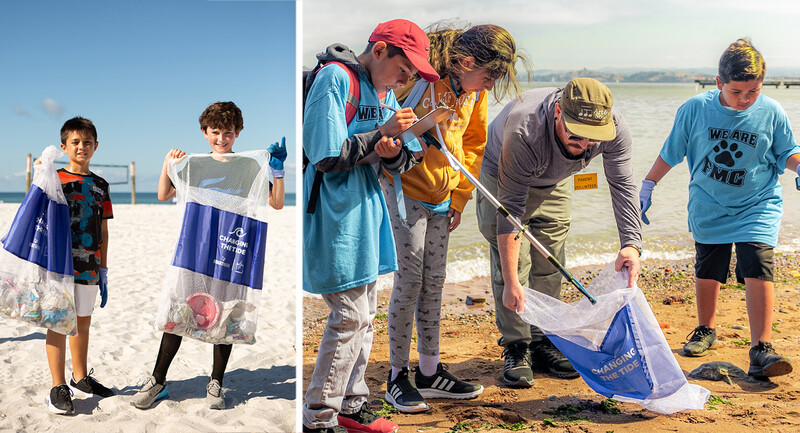
Saving the Ocean, One Student at a Time

Back On Track with Climate Science

Making Math More Relevant
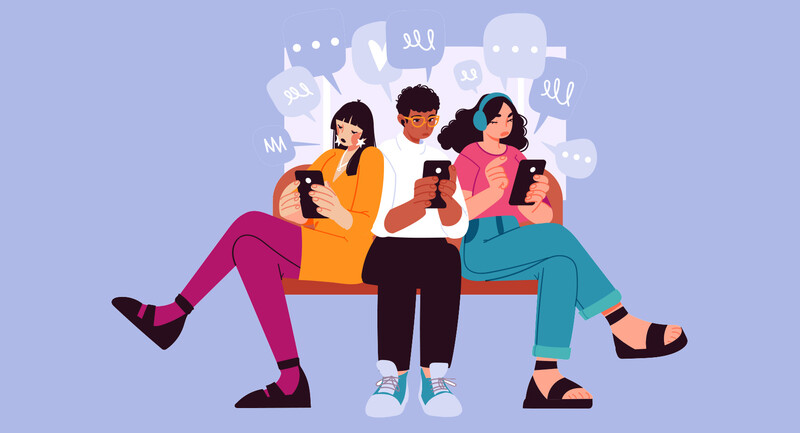
Meeting Students Where They Are
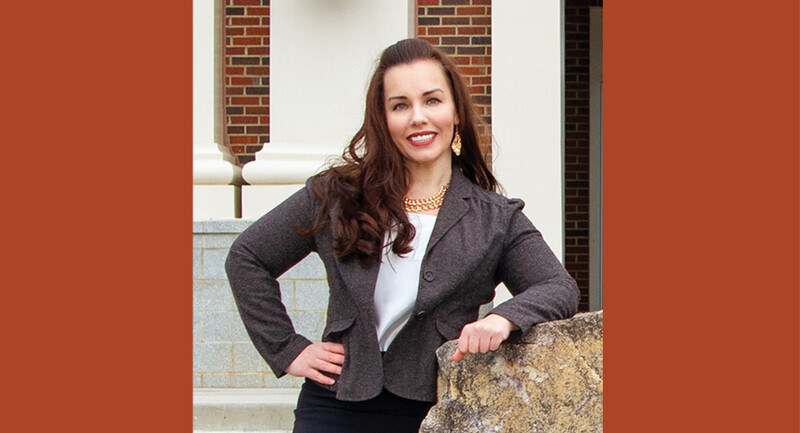
Helping Students Give Back
To process a transaction with a purchase order please send to [email protected].

10 Reasons Why Virtual Field Trips Benefit Students
by Banyan | Aug 8, 2022 | Newsletter | 0 comments

Virtual field trips are a great way to supplement in-class instruction with fresh content, real-world examples and expert instructors from all over the world.
Are you interested in learning more about virtual field trips? You have come to the right place!

Virtual field trips are no longer a dream of the future, now that Internet access and video-conferencing solutions (like Zoom and Facetime) are widely available. In fact, as remote learning grew due to the COVID-19 pandemic, they have increased in popularity.
This article is a great resource for those of you interested in trying a virtual field trip for your classroom (or school district). Before we list our 10 reasons, let’s answer the question:
“What is a virtual field trip?”
Generally speaking, a virtual field trip is simply a field trip delivered by technology and experienced from the classroom (or school). A virtual field trip uses tech-based resources such as online content and/or video-conferencing to give students the learning experiences gained from a traditional, in-person field trip.
Virtual field trips provide experiential content beyond what can be learned from a textbook. They can be synchronous or asynchronous… interactive or non-interactive. Additionally, some providers offer a lesson plan to supplement the field trip. Also, sometimes they can be hosted by an instructor.
We call our service a “ Live Virtual Field Trip ” because our trips feature live instructors who are experts in the subject matter and trained to make the experience fun and engaging. Accordingly, advanced trips (like ours) can involve multiple hosts at different locations, and utilize classroom technology (like iPads or computers) to engage the learner in real-time with the teachers, as opposed to a passive viewing of a TV show or video.
10 Benefits of Virtual Field Trips
Now that we have a definition, here is a list of the top reasons why we think virtual field trips are a great tool for educators.
1. A new perspective
Virtual field trips offer a new spin on a class topic. We mentioned before how they are designed to provide a learning experience beyond the textbook. They give students access to real life “artifacts” allowing them to learn by seeing.
When done well, they allow students to go beyond the facts and take a deep dive with the subject matter.
2. Varied teaching styles keep students engaged
Educators know that a new teacher can create a spark in the classroom. Virtual field trips bring change and diversity to the school day. When done well, a virtual field trip with a live instructor is more fun and engaging than an in-person field trip!
3. They can be tailored to the classroom’s needs
Unlike a textbook or standardized curriculum, virtual field trips can be personalized! They can be designed to be open-ended and can follow students’ questions and desires. This allows the instructor to match the students’ learning interest and maximize engagement.
4. Bang for your buck
Virtual field trips are usually more cost-effective than in-person field trips. For example, there is no need for transportation, insurance and other hard costs. There are many free ones and the fee-based options are generally very affordable when compared to in-person options. This allows teachers and administrators to create a “field trip experience” more often with a given budget. Also, annoyances like finding chaperones and collecting permission slips are eliminated!
CILC is a great resource for popular free and paid virtual field trips. We are an award-winning provider in their directory !
5. Offer unique curriculum
Virtual field trips allow schools to offer unique curricula that are not traditionally offered, but are still critical to student learning and/or health. A prime example of this is social emotional learning. This is a growing area of importance for our students, however many schools do not yet have the resources to offer it consistently.
If your school is interested in Banyan’s social emotional learning curriculum, click here .
6. Students can form unique relationships with an online instructor
Students can develop a unique relationship w/ their virtual teacher. Especially on difficult/critical topics, students can open up on issues they wouldn’t necessarily do with their in-class teacher. A virtual instructor that is a specialist or expert on a given subject can unlock interest and contributions from their students.
7. Virtual teachers are usually technology experts
Virtual instructors are often adept at harnessing classroom technology. They can bring in exciting tools for students to use and also provide in-class teachers with tips/tricks. Tech is no longer a barrier when you have a tech expert in the classroom (virtually).
8. Give your teacher a break
A virtual field trip can be a welcome rest stop for a busy in-class teacher! Especially when there is a topic that is not a teacher’s strength or a non-core subject. A virtual teacher is an elegant solution.

9. In-class teachers may have something to learn
Now that remote teaching is a new skill required for in-class teachers, they may have something to learn from a virtual field trip! A good virtual instructor can model best practices for online teaching. Therefore, In-class teachers can learn new methods or styles of teaching that they can incorporate beyond the virtual field trip.
10. Access to experts
Students need to see experts and role models in action. Virtual field trips can bring almost any expert into the classroom. Consequently, students can see firsthand what they do and interact directly with them.
Are you ready to try one?
We hope you found this article useful. In our view, a virtual field trip is a great way to augment or supplement classroom instruction.
If you have more questions or have interest in discussing our content and what we could do for your school, feel free to contact us !
Submit a Comment Cancel reply
Your email address will not be published. Required fields are marked *
Save my name, email, and website in this browser for the next time I comment.
Recent Posts
- From Chalkboards to AI: The Evolution of Educational Tools
- Disruptive Technologies in the Classroom
- Navigating the Digital Shift: Strategies for Effective Online Learning in K-12 Education
- Refreshing Minds and Energizing Learning: The Power of Brain Breaks in Education
- From Shipwrecks to Screen Time: The Double-Edged Sword of Progress
Recent Comments
- Robyn on Teachers, Hack Your Time!
- Christian Hitzl on Daily Digital Detox: Technology Balance Challenge
- Malia Panda on Our Favorite Tools for Online Learning
- Ralph on Our Favorite Tools for Online Learning
Product categories
- Digital Citizenship
- Global Citizenship
- High School
- Junior High
- Parents/Educators
- Uncategorized
Educational, Engaging, Accessible: The Benefits of Virtual Field Trips

Imagine driving through a desert 250 million years ago, watching dinosaurs graze and roar all around you. Imagine flying through outer space, exploring distant planets that humans have never before set foot on. Imagine traveling inside the human body, learning about organ systems and anatomy in more detail than ever before. In real life, these adventures would be impossible. There’s no way to travel back in time, or fly to Neptune and Pluto, or shrink yourself down to the size of a human cell. But with the help of virtual field trips , imagination can become (extended) reality.
More and more educators and parents are seeing the value of virtual field trips , which enable students of all ages to have fantastic learning experiences like these. But what are the benefits of virtual field trips? How are virtual field trips helpful in education? And why use virtual field trips in the classroom?
Research continues to emerge about the powerful potential of virtual field trips. In this article, we’ll explore the many reasons why virtual field trips can be such a wonderful educational tool:
- Virtual field trips can enhance students’ learning.
- Virtual field trips can keep students more engaged.
- Virtual field trips are more accessible for many classrooms and kinds of learners.
- Virtual field trips allow for collaboration and connection between different students, different classrooms, and different schools.
- Virtual field trips create pathways to social emotional learning .
What is a virtual field trip for education?
Before diving into the benefits of virtual field trips, let’s start with a virtual field trip definition. After all, educational virtual reality (VR) is a relatively new phenomenon, and the metaverse is home to many different kinds of virtual experiences.
A field trip is defined as any “group excursion for the purpose of firsthand observation” or “an educational trip away from the classroom, as to give students firsthand experience.” Most students take field trips at some point during their educational careers, especially when they are in elementary school.
Virtual field trips, though, empower classrooms to travel farther away than their nearby park or local museum. As the name implies, a virtual field trip is a field trip that occurs virtually — that is, somewhere on the extended reality spectrum. Virtual field trips allow students to have experiential learning opportunities and go on educational excursions using the power of immersive digital technologies.
Of course, virtual field trips are not one size fits all. Let’s extend our virtual field trip definition by exploring the different forms of extended reality.
What is extended reality?
Extended reality, broadly speaking, refers to the many forms of immersive experience included in the metaverse . Extended reality is the space where the physical world and the digital world overlap.
Extended reality comes in many forms. It’s helpful to divide extended reality into three categories on the “spectrum of virtuality,” ranging from least virtual to most virtual: augmented reality, mixed reality, and virtual reality.
- Augmented reality has a low level of virtuality. It comprises experiences with limited interaction between virtual and physical objects. For example, a student might use a mobile device to overlay an image of an Egyptian pyramid on top of their classroom table. Or they might use their phone to scan a plant they see in their backyard and have detailed information about the plant’s biology, scientific name, and medicinal uses pop up on screen.
- Mixed reality has a medium level of virtuality. Mixed reality is close to augmented reality, but involves more lifelike interactions between the physical and the virtual. For example, a student could wear a see-through head-mounted display and watch a pharaoh walk around their classroom and sit in a chair next to them.
- Virtual reality has a high level of virtuality. Virtual reality refers to fully digital experiences, in which users interact with a wholly computer-generated world. For example, a student can put on a virtual reality headset and be immersed in ancient Egypt, where they can walk around and explore their surroundings alongside their classmates.
Virtual field trips can occur in any of these three settings, but the benefits of virtual field trips vary based on their level of virtuality, and different kinds of virtual field trips will have different uses in the classroom. It’s just like in the real world: a student can benefit from having a speaker visit their school, just as they can benefit from visiting a museum or historical site, but they will have different takeaways from each learning experience. Similarly, kids can learn from seeing projections of historical figures interact with their classroom space and from being fully immersed in a far-off digital world. Different types of virtual fields might be best for different kinds of learners, different school subjects, and different ages: virtual field trips for kindergarten are not the same as virtual field trips for high school, and a virtual field trip that aligns with a Black History Month curriculum will differ from a virtual field trip focused on chemistry or biology.
What are the benefits of virtual field trips?
Now that we understand what a virtual field trip is, let’s explore the benefits of educational VR . Although there are practically countless reasons why virtual field trips are helpful in education, we can divide the benefits of virtual field trips into a few main categories:
- Virtual field trips can make for improved learning experiences and help students understand concepts more fully.
- Virtual field trips are more engaging than traditional learning experiences for many types of students.
- Virtual field trips are more accessible , especially in remote learning contexts, and can give students access to experiences they would otherwise not be able to have.
- Virtual field trips allow students to collaborate across boundaries , learn about far-off places and work with people from other regions.
- Virtual field trips provide opportunities for students to develop social emotional learning skills and reflect on their experiences.
Let’s dive into each of these types of benefits in more detail.
Learning Benefits of Virtual Field Trips
Virtual field trips can improve the learning experience in a variety of ways. On measures of comprehension, retention, and skills-based learning, students often perform better after learning in a virtual environment or taking a virtual field trip.
One reason for this is that some things are simply easier to learn in immersive virtual contexts. This is especially true if you are attempting to learn a concrete or manual skill: a virtual learning experience can engage your senses more fully and provide a more realistic simulation of the situations in which you might be expected to perform a task, without requiring the expense or risk that real-life training scenarios can incur.
Increasingly, the scientific literature is validating the common intuition that it’s easier to perform a skill once you’ve tried it out in a simulation. A 2019 study from professors in California and Denmark evaluated the effectiveness of immersive educational VR for the purposes of laboratory safety training for undergraduate college students. Students who underwent the VR experience performed significantly better on behavioral transfer tests: that is, after completing the VR training, they had improved risk evaluation skills in a real life laboratory. Notably, although a fully immersive VR experience led to the greatest improvement in behavioral skills, a desktop VR module also led to a significant improvement over traditional teaching methods. This is just one piece of evidence that virtual field trips can have significant benefits, especially for skills-based learning.
A broader literature review from researchers at the University of Sao Paulo found evidence that virtual field trips are also helpful in K-12 education. They identified multiple studies in which head mounted display-based virtual reality education contributed to learning improvements. Although the greatest gains were in “‘skills-based’ learning outcomes,” educational VR also appeared to have positive knowledge-based results, contributing to greater information recall and learning comprehension compared to non-VR education settings. Immersive virtual environments also seemed to improve learning outcomes for students with special needs.
The same researchers found studies of educational VR in the following school subjects:
- STEM subjects (science, technology, engineering, and math)
- Social sciences, particularly history
- Social and emotional learning skills
They noted that virtual field trips might be especially appealing in STEM fields, because they avoid the safety hazards and high costs of using real lab equipment. Kai XR , for example, offers a variety of VR field trips related to health and science, including an immersive tour of the human body and a field trip in which students witness a volcano explosion . However, the researchers also pointed out that virtual field trips have potential for social studies, the arts, and many other subjects. Kai XR already provides a range of arts and humanities virtual field trips, including activities about Amy Sherald’s Obama portraits and tours of the Schomburg Center for Research in Black Culture .
Engagement Benefits of Virtual Field Trips
Perhaps even more significant than VR’s ability to contribute to students’ learning is its ability to increase their engagement with classroom activities. It makes sense: actually taking a tour of the White House sounds much more exciting than reading about it in a textbook, right?
Multiple studies back this up, repeatedly finding that virtual field trips enhance students’ attention, enjoyment, and intrinsic motivation to learn. For example, one investigation of a virtual interactive simulation about gravity for middle school students found that the simulation had positive impacts on all of the following:
- Student enjoyment
- Self-perception of learning
- Presence and engagement
The researchers found that embodied interaction is particularly crucial for student engagement: when students can use multiple sentences and truly interact with their learning material, they tend to be more excited about and engaged in their learning. We all know what it’s like to have to sit and listen to a boring lecture without having any meaningful way to participate. Virtual field trips provide the complete opposite experience, deeply immersing students in the material.
Virtual field trips also have the potential benefit of improving inclusivity and diversity in the classroom. It’s important that students see themselves represented in their coursework and that they learn about subjects relevant to their own history and culture. That’s one reason why people have been advocating for more inclusive curricula in both online and offline settings. Although not all educational VR experiences will promote inclusion, companies like Kai XR make it a priority. Our virtual field trips represent a range of cultures and societies, taking students from ancient Mayan temples to modern-day Syria.
Accessibility Benefits of Virtual Field Trips
Virtual field trips don’t just have the benefit of helping students learn more — they also make learning accessible for more students. Virtual field trips are a cheaper way to see far-off destinations, and they’re more flexible, more adaptable, and more accessible than most traditional field trips. That means virtual field trips can be a great option for all of the following:
- Students with mobility restrictions
- Students who are immunocompromised
- Remote learning environments
- Classrooms with limited funding for field trips
One reason virtual field trips are so helpful in education is that they allow you to visit far-off destinations that would otherwise be totally inaccessible. All the money in the world won’t let you take an elementary school classroom to the top of Mount Everest or make it possible to tour the solar system. But with Kai XR, those field trips are possible with any mobile device, from a smartphone to a VR headset.
Many other field trips are theoretically possible, but would be prohibitively expensive for the vast majority of people. You could, for example, take a classroom to the Martin Luther King, Jr., memorial as a Black History Month activity . But unless you live in Washington, D.C., taking your students to a distant museum would likely be too expensive. Virtual field trips allow classrooms to visit a wider range of destinations from the comfort of their own school building.
And students don’t even have to be in the school building — virtual field trips are also a great option during periods of remote learning. Scholars at the University of Lincoln have described virtual field trips as one means of “ future-proofing ” education when in-person field trips are canceled or classrooms have to move online, whether for public health reasons or otherwise.
That doesn’t mean virtual field trips should be seen as a worse alternative to in-person field trips. One scholarly article in the International Journal of Instructional Media described many advantages that virtual field trips can have over in-person ones, many of which relate to their increased flexibility and individualized nature. Those advantages include all of the following:
- More learner-centered: Students can adapt virtual field trips to suit their own needs and style of learning. For example, students can often pause virtual field trip activities or complete them at their own pace, allowing them to get as much out of the learning experience as possible.
- Geographic and temporal independence: In many cases, students can access virtual field trip materials whenever and wherever they like. Virtual field trips also don’t create the logistical and scheduling difficulties that traditional field trips usually do.
- Control of content: Many platforms allow teachers and students to design or adapt the experience of virtual field trips, allowing teachers to create field trips that more closely align with their curriculum and giving students more autonomy over their learning.
- Easily adapted and reused: Unlike in-person field trips, which usually cannot be significantly changed and which are harder to repeat on a regular basis, virtual field trips can generally be changed more quickly if students and teachers identify possible improvements for future iterations.
In addition to the inclusivity benefits mentioned earlier, educational VR also makes field trips accessible to a wider range of students. One professor from Temple University has pointed out that virtual field trips are fantastic options for movement-restricted or immunocompromised students, who may not be able to travel long distances to inaccessible areas. Thus, virtual field trips can be a powerful force for equity in education.
Lastly, virtual field trips have the unique benefit of being more climate-friendly than many in-person field trips, which often require students to travel on greenhouse gas-emitting buses. Some researchers argue that this makes virtual field trips especially beneficial for climate change education, which can provide educational benefits without harming the planet.
Collaboration Benefits of Virtual Field Trips
The Internet can be a powerful tool for collaboration and building community. This is especially true of virtual field trips, which have been used to help students and academics communicate in a variety of fields. Virtual field trips can enable collaboration in multiple ways:
- Students from different classrooms can communicate by sharing in a virtual field trip experience. Internet-based field trips enable students to interact with each other’s avatars, even if they’re not in the same classroom.
- Teachers can share and adapt the same virtual resources. In comparison with in-person field trips, which often need to be planned based on a specific school’s location and resources, virtual field trips are generally easier to change and can be shared between schools.
- Students can learn from and interact with experts who live in other regions and countries. They have access to a broader range of resources than would be available in their immediate area.
What’s Next?
Virtual field trips have a huge range of benefits, from improving students’ learning and engagement to enabling collaboration between students and teachers around the world. Now that you know the benefits of virtual field trips, it’s time to explore your options! Check out Kai XR’s vast library of virtual field trips today.
Also check out:
- 21st Century Skills for Students: The Long-Term Benefits of Virtual Reality
- Virtual Field Trips (Examples, Benefits, and Real-World Learning)
- Breaking Educational Barriers with the VR Classroom
- The Metaverse: Transforming K-12 Education & Learning
Share This Article
Subscribe for updates, table of contents, get started with kai xr.
There’s so much for you and your students to explore. All you need to do is start. Try out Kai XR on your smart device, tablet, VR headset, or laptop. We’ll be your guide!
Dive deeper into the metaverse, XR, VR, and all the tech bringing the next generation of learning to your classroom.

Celebrate Math & ELA with Kai XR this April
.png)
Take Your Women’s History Month Celebrations to the Next Level with Kai XR

Just for You! — Kai XR’s March Learning Activities


Our Virtual Field Trips:
Are aligned with your curriculum, motivate your students with technology, add time to your day, support all your learners, include quizzes and learning activities, can increase student outcomes, are budget-friendly, shape your students into global citizens.

Curriculum Alignment
Our video content is aligned with social studies, life science, and geography curriculum standards. Look up our curriculum alignments here.
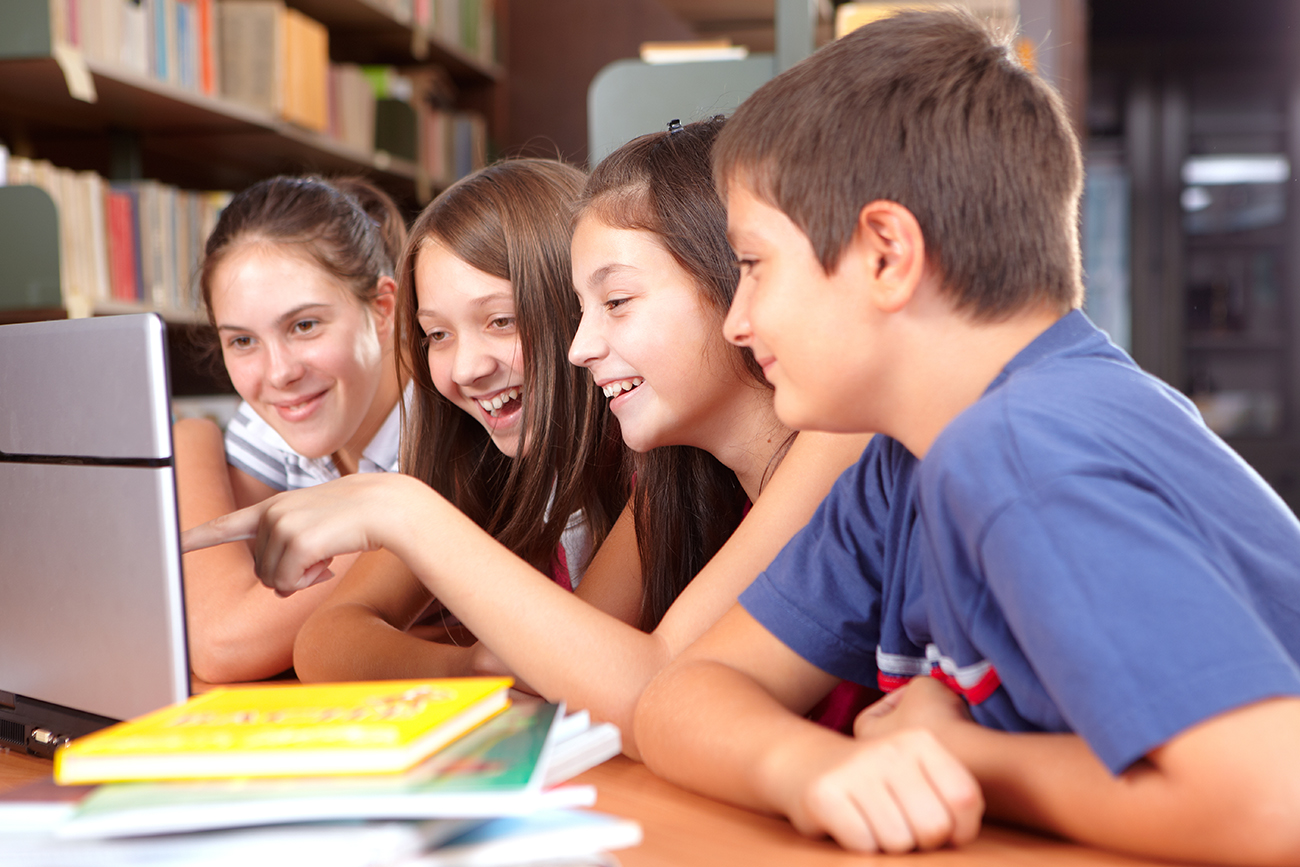
Add Time To Your Day
Our videos are a time-saver for you because they are written to align with curriculum standards. You can rely on our videos to help you meet your classroom goals.

Quizzes and Activities
Students can quiz themselves online, or you can download quizzes and learning activities.

Budget-Friendly
You have unlimited access to our videos and learning resources. You won’t find another classroom resource that provides you with so much, yet costs so little. We’ve made sure of it!

Motivate with Technology
Teachers everywhere see the magic that happens when they bring technology into the classroom. All you need is an internet connection, and the magic can by yours!
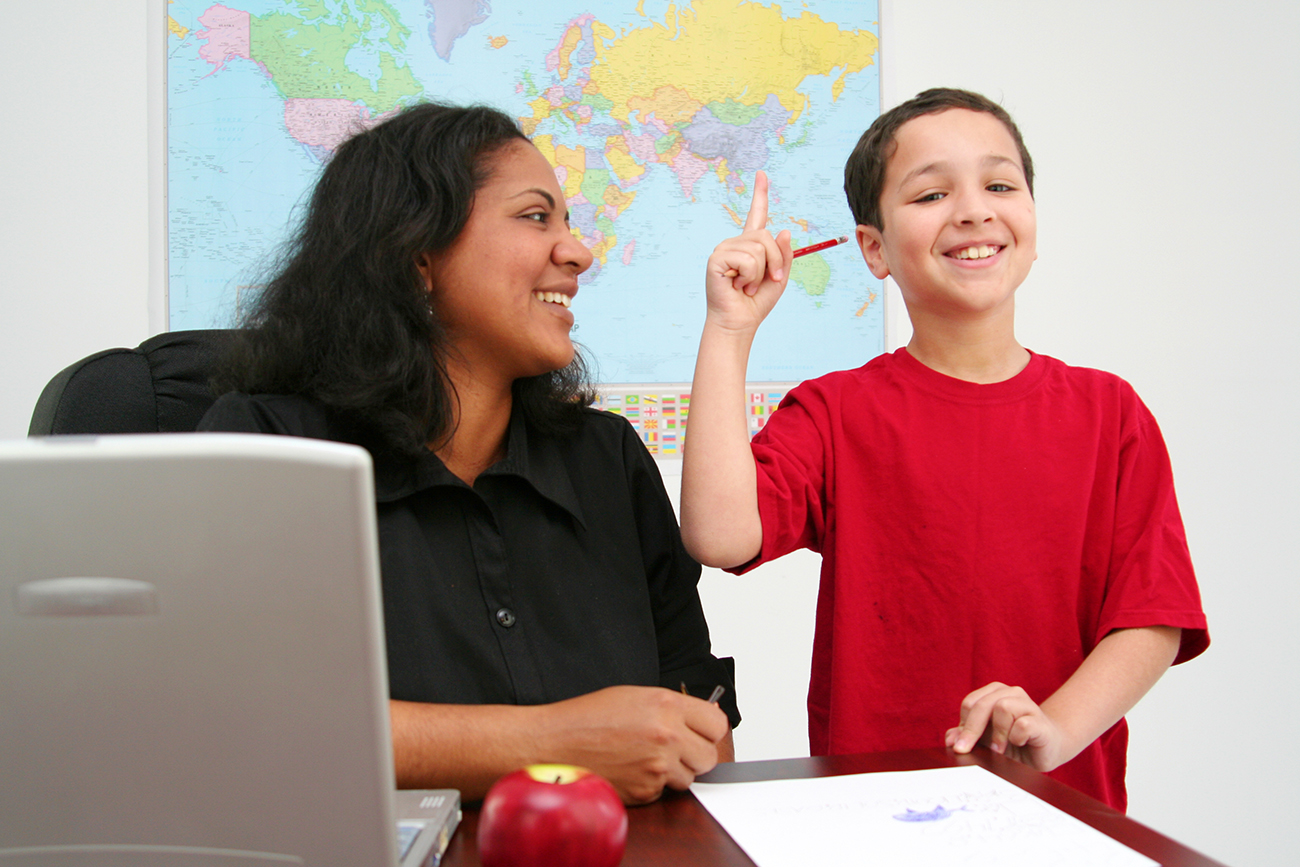
Increase Learning Outcomes
Videos provide an additional path to learning and are one of the most effective means of creating knowledge for some students. Also, our videos can be watched as many times as needed. Learning outcomes can be expected to increase for many students.

Support All Your Learners
You know that your students learn differently. Our videos help you reach all your students more quickly. Visual learners, students with dyslexia, and ESL students are great examples of children who can benefit from our videos.

Create Global Citizens
Help your students learn about the world around them. Our videos bring the sights and sounds of distance places right into the classroom and create experiences they may not otherwise ever have.

Easy Use of Technology
Technology is making its way into the classroom at a faster and faster rate. For students, it can’t happen fast enough. All you need is an internet connection!

Extreme Habitats
Our virtual field trips take students to extreme habitats that would otherwise be too risky or else impossible to visit. Rainforest jungles, coral reefs, and the Galapagos Islands are good examples. They are also the most popular videos on our website.

21st Century Learning Tools
Today’s students are 21st century learners. This means we need to make technology a part of their education. It also means they need to learn about the world around them. You can do both with our videos!

No Restrictions
Our virtual field trips let students go anywhere at anytime. Research says that virtual trips can provide the same learning benefits that an actual trip does. Taken together, this means that our virtual field trips can be a successful way to teach students about the world around them – any day, any time!
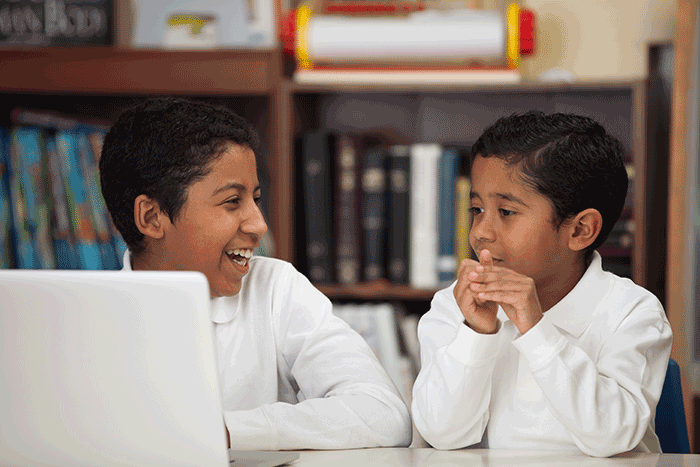
Best Practices for E-Learning
We are trained in e-learning principles and use best practices in our video design.

Independent Learning
Students can watch and learn on their own, or as part of a group.

Special Needs
Certain groups of students can’t easily participate in field trips. Our virtual field trips make sure that no students are ever excluded and all can take part.
Where would you like to go next?
"It is with deep regret that we inform you about a recent loss to our school community," superintendent Ben Kirby said in a statement sent out to the student body on Friday, obtained by USA TODAY.
"Today, Friday, April 19, one of our current high school students suddenly passed away. Our hearts, thoughts and prayers go out to their family and friends," the statement continued.
Officials have not identified the student.
Student was attending Robotics World Championship
The school's principal, Dan Hass, informed parents that the student was attending the Robotics World Championship, according to reporting by the Oakland County Times .
“Our hearts are very heavy as we mourn this loss," Hass said, per the outlet. "We will be ready to meet the needs of our students and staff Monday morning.”
Kirby noted in the statement that Lake Orion High School and Lake Orion Community Schools have crisis teams that will be ready to "help with the needs of students and school personnel."
"We are saddened by the loss to our school community and will make every effort to support our high school students through this tragedy," Kirby shared.
Authorities in Houston told USA TODAY a 16-year-old boy from Michigan died as a result of an apparent suicide Friday evening.
The teen's official cause of death is pending an autopsy by the Harris County Coroner Coroner's Office.
Lake Orion High School Robotics team responds to tragedy
"This has been an incredibly challenging time for our team and community, and we are grateful for the overwhelming support we’ve received," Lake Orion Robotics FIRST Team 302 shared in an Instagram post .
"We’re prioritizing the privacy of the family right now and will share more when it’s appropriate. Thank you all for your understanding and support."
Lake Orion High's robotics team was attending the FIRSTS robotics world championships in Houston, Texas that ran April 17 through April 20, according to the competition's website.
Support has poured in from other robotics teams across the country.
"Everyone on f(x) robotics sends their love and support to all @firstteam302 team members, their families, and the entire Lake Orion community as they get through this incredibly difficult time. #wearealldragons ," a North Carolina team wrote.
"4362 would like to extend our deepest condolences to all of the families, students, mentors, and coaches on @firstteam302 we our all here for you. #morethanrobots #wearealldragons ," wrote a Michigan team.
A West Virgina team said it is "grieved by the fact FIRST has lost a member of its community."
"This is a tragic time for everyone associated with team 302 and the FIRST community," an Idaho team shared.
Kennebec Journal and Morning Sentinel
Account Subscription: ACTIVE
Questions about your account? Our customer service team can be reached at [email protected] during business hours at (207) 791-6000 .
Photos: Litchfield students enjoy pool time
Students search for salamanders and wade through a vernal pool during annual field trip
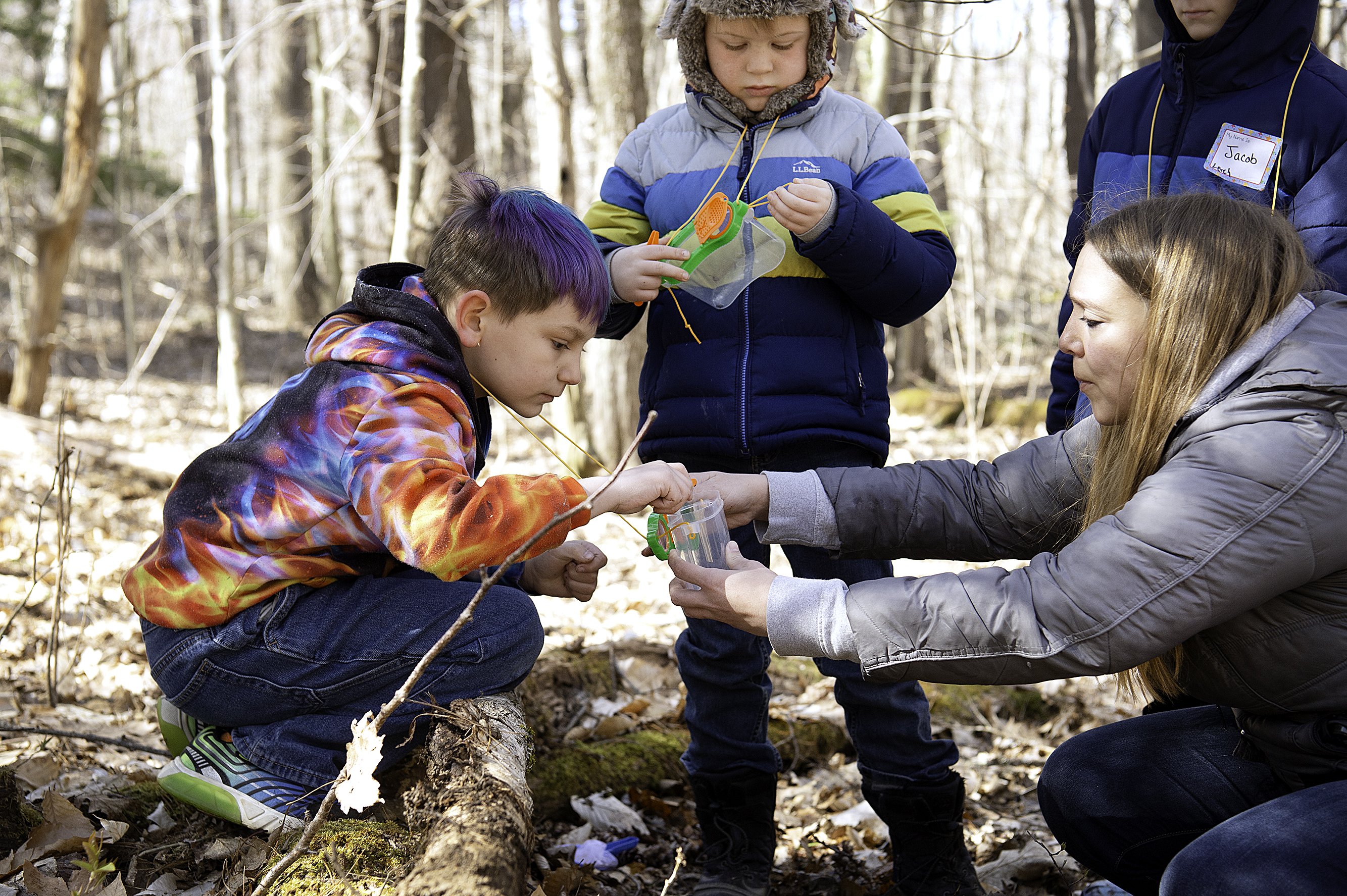
Carrie Ricker School teacher Kristen Archer helps third graders David Higgins, left, Kyrian Bratz, center, and Jacob Archer look for salamanders Thursday during a Vernal Pool Field Trip at Smithfield Plantation in Litchfield. Seventy-eight third graders visited the preserve guided by Smithfield trustees, members of the Litchfield Conservation Commission and employees of the Maine Department of Environmental Protection. Students searched for salamanders before hiking to a vernal pool where they discovered fairy shrimp, caddis fly larva, wood frog eggs and other critters that make their way to the vernal pool after ice out. Thursday was Higgins 9th birthday. Daryn Slover/Sun Journal
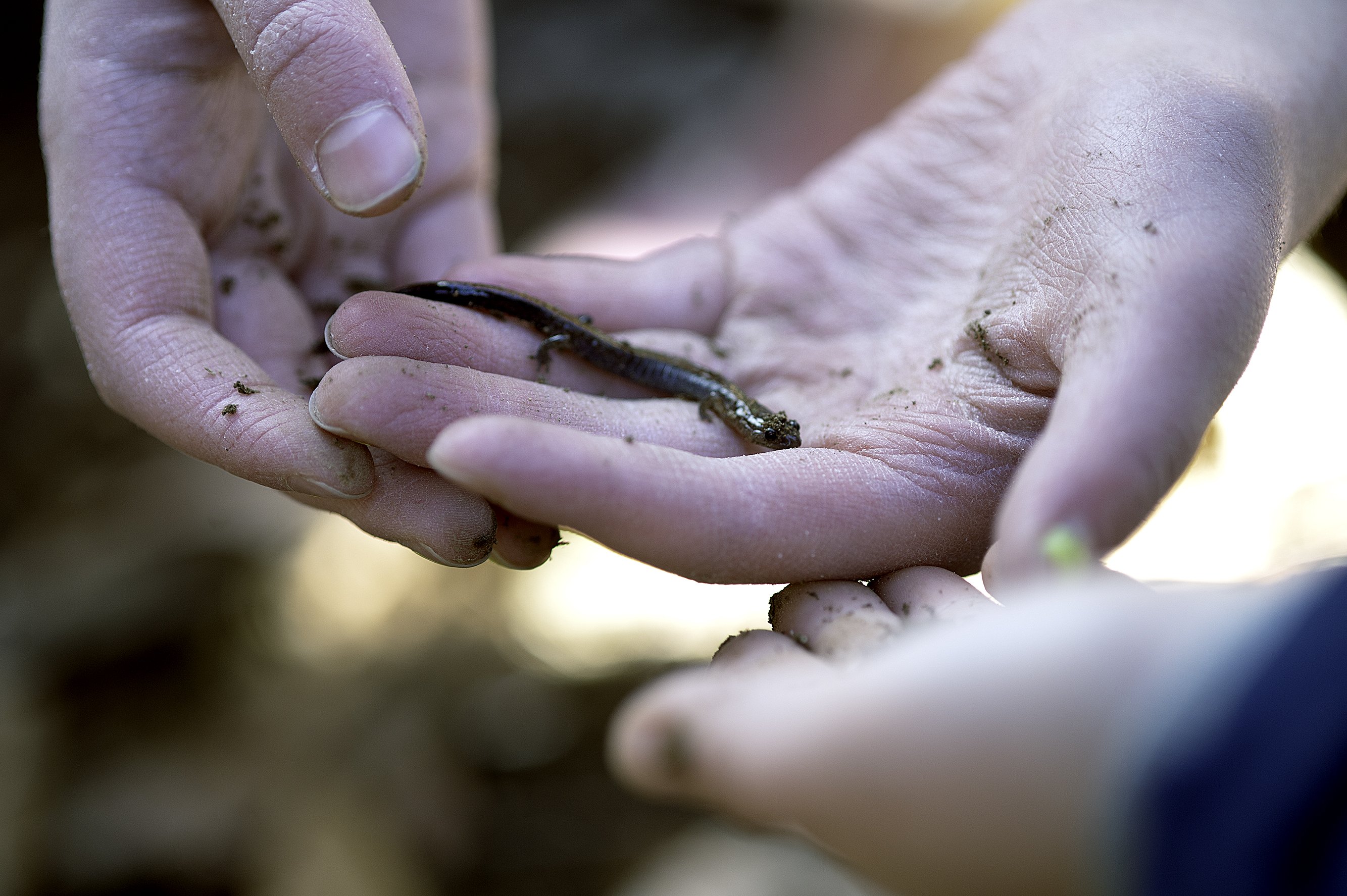
Students from Carrie Ricker School examine a salamander Thursday during their Vernal Pool Field Trip at Smithfield Plantation in Litchfield. Daryn Slover/Sun Journal
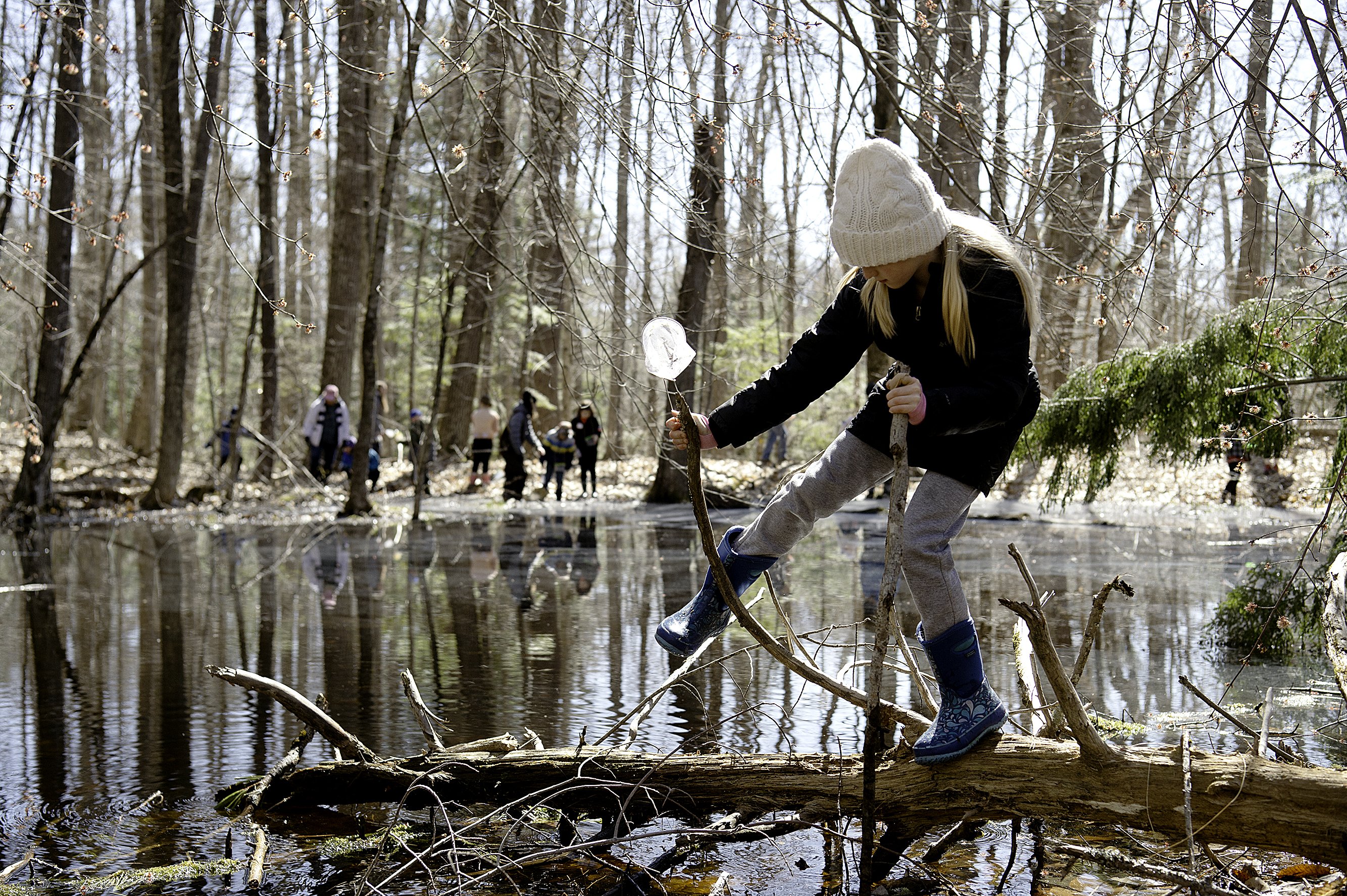
Carrie Ricker School third grader Elsa Farrington, 9, crosses a downed tree while searching for specimens Thursday during a Vernal Pool Field Trip at Smithfield Plantation in Litchfield. Seventy-eight third graders visited the preserve guided by Smithfield trustees, members of the Litchfield Conservation Commission and employees of the Maine Department of Environmental Protection. Students discovered fairy shrimp, spotted salamanders, caddis fly larva and other critters that make their way to the vernal pool after ice out. Daryn Slover/Sun Journal
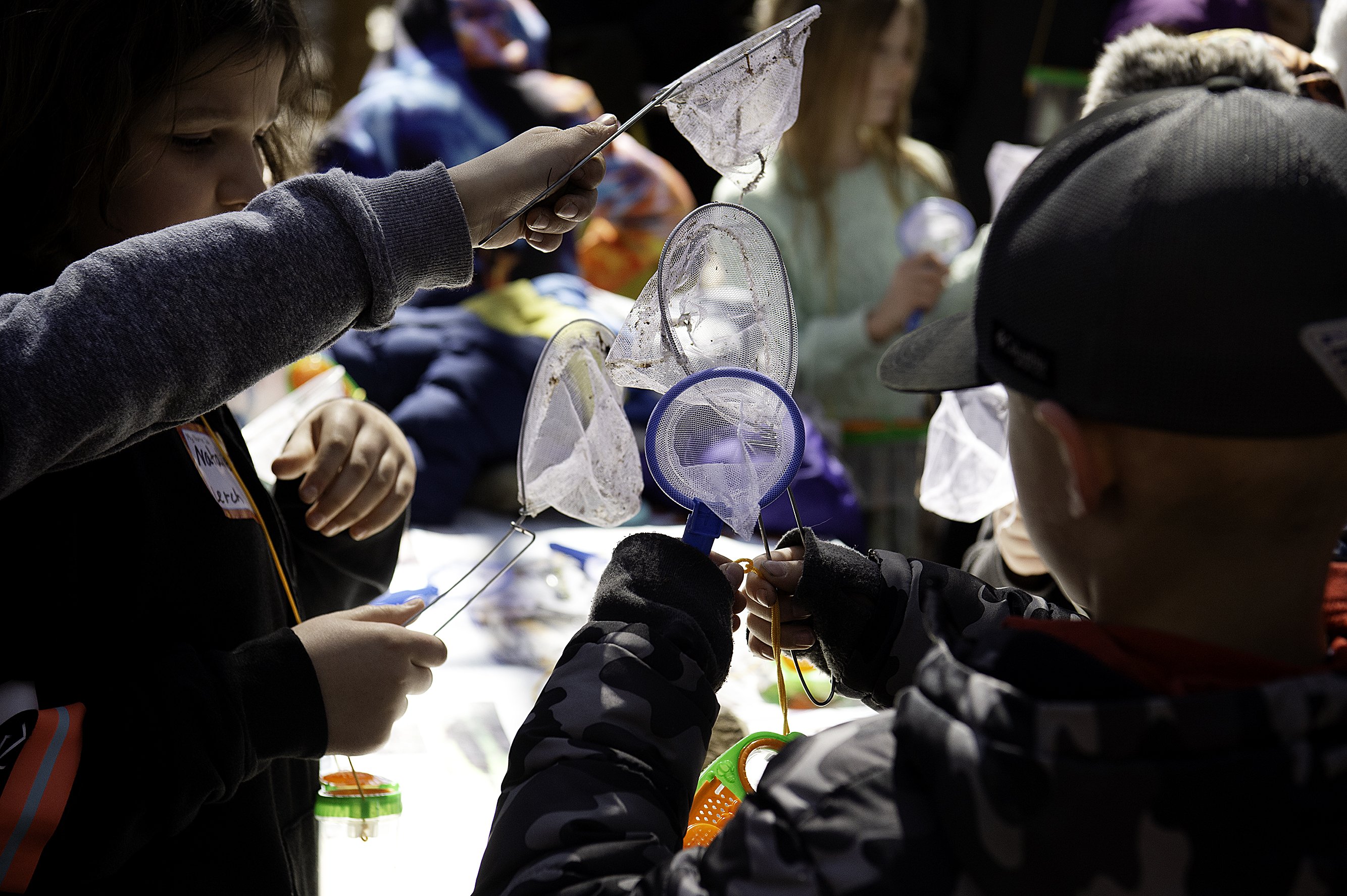
Students from Carrie Ricker School pick out a dip net Thursday during their Vernal Pool Field Trip at Smithfield Plantation in Litchfield. Students used the nets to catch critters such as fairy shrimp, dragonfly larva and caddis fly larva. Daryn Slover/Sun Journal
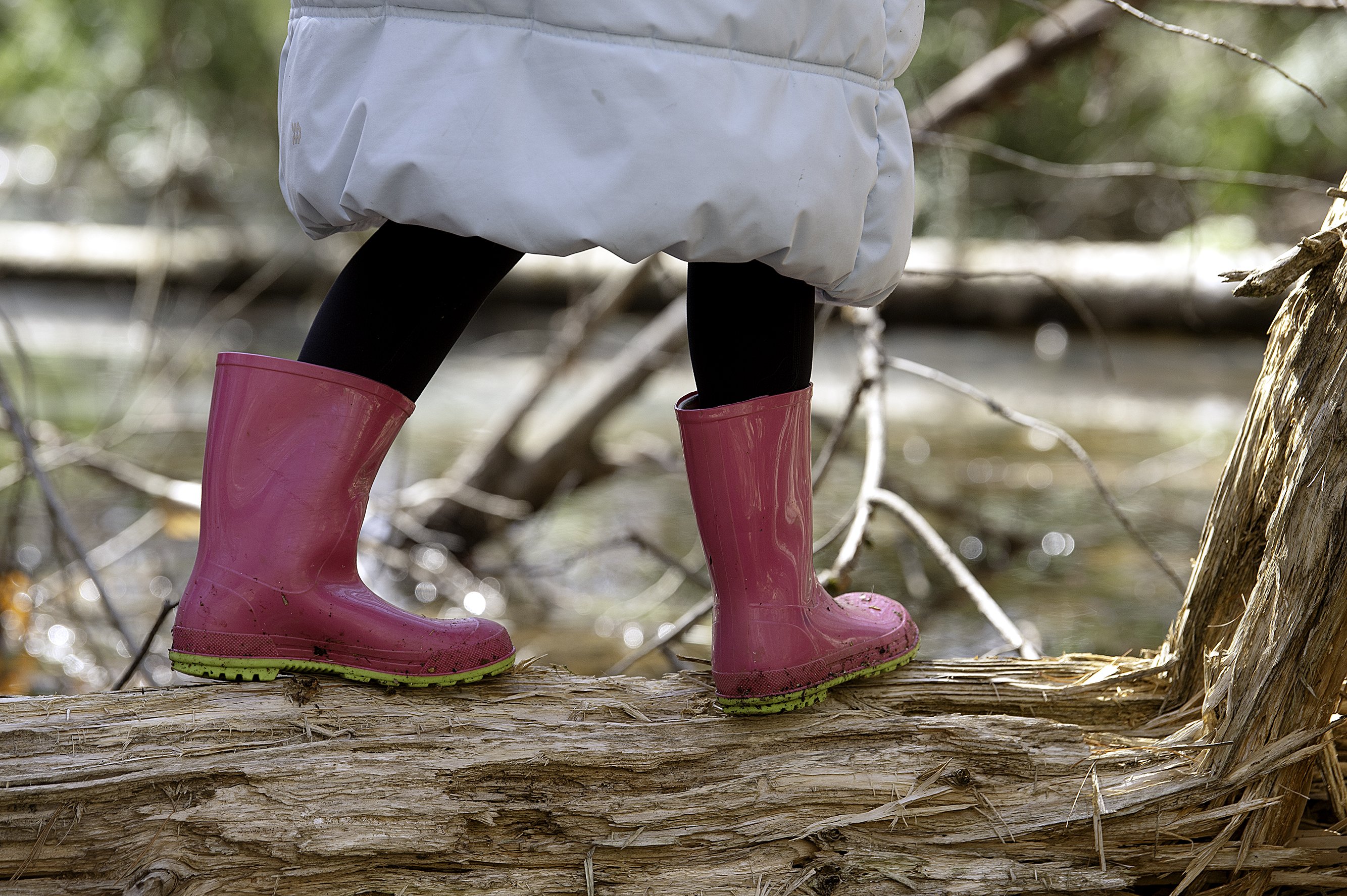
Carrie Ricker School third grader Isabella Bosse, 8, crosses a fallen tree Thursday during a Vernal Pool Field Trip at Smithfield Plantation in Litchfield. Students wore boots to keep their feet dry, but most children pushed the limits until water spilled over the top of their boots. Daryn Slover/Sun Journal
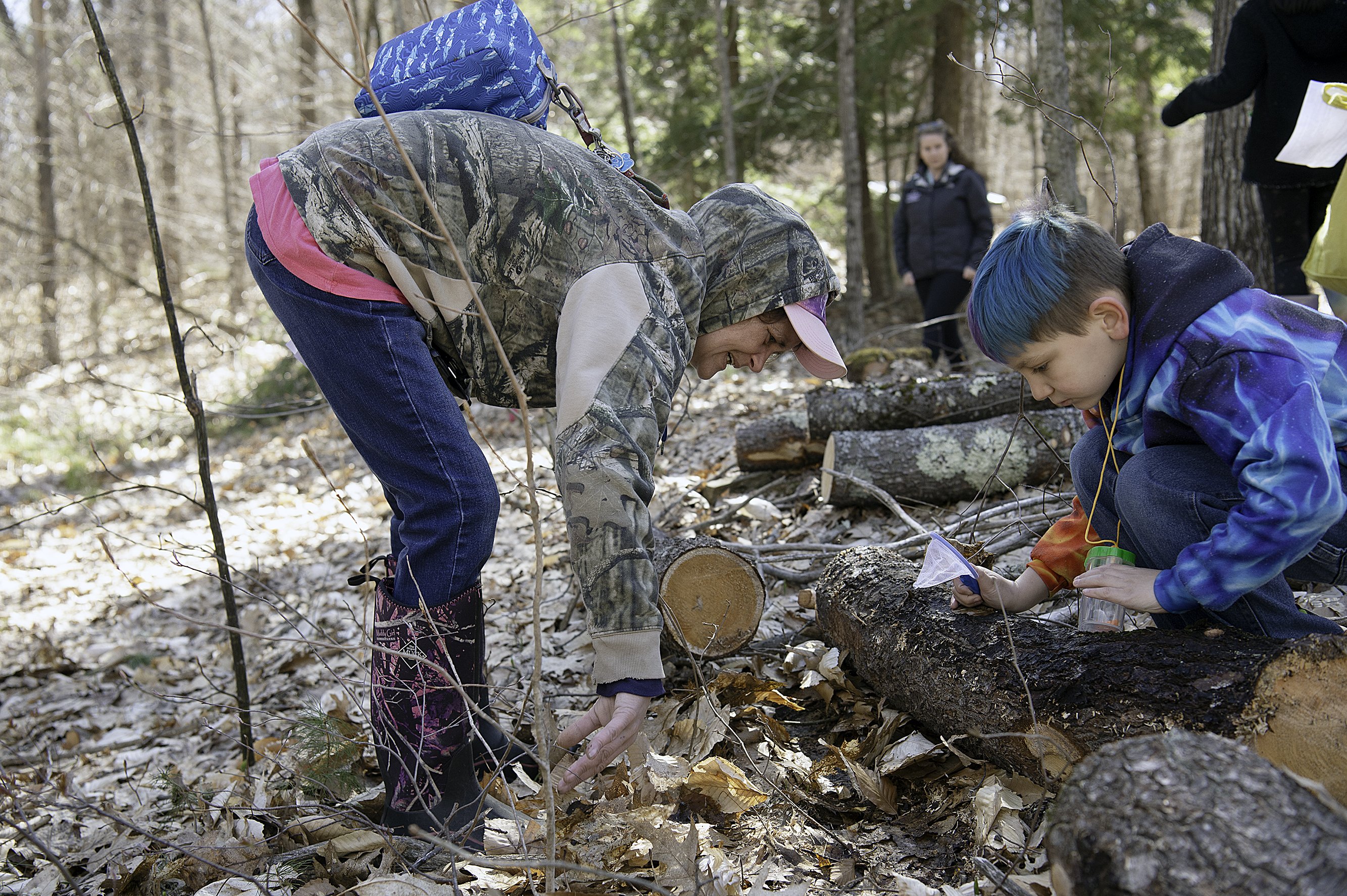
Carrie Ricker School third grader David Higgins and his grandmother, Renee Dubois, look for salamanders under a fallen tree Thursday during a Vernal Pool Field Trip at Smithfield Plantation in Litchfield. Seventy-eight third graders visited the preserve guided by Smithfield trustees, members of the Litchfield Conservation Commission and employees of the Maine Department of Environmental Protection. Students searched for salamanders before hiking to a vernal pool where they discovered fairy shrimp, caddis fly larva, wood frog eggs and other critters that make their way to the vernal pool after ice out. Thursday was Higgins 9th birthday. Daryn Slover/Sun Journal
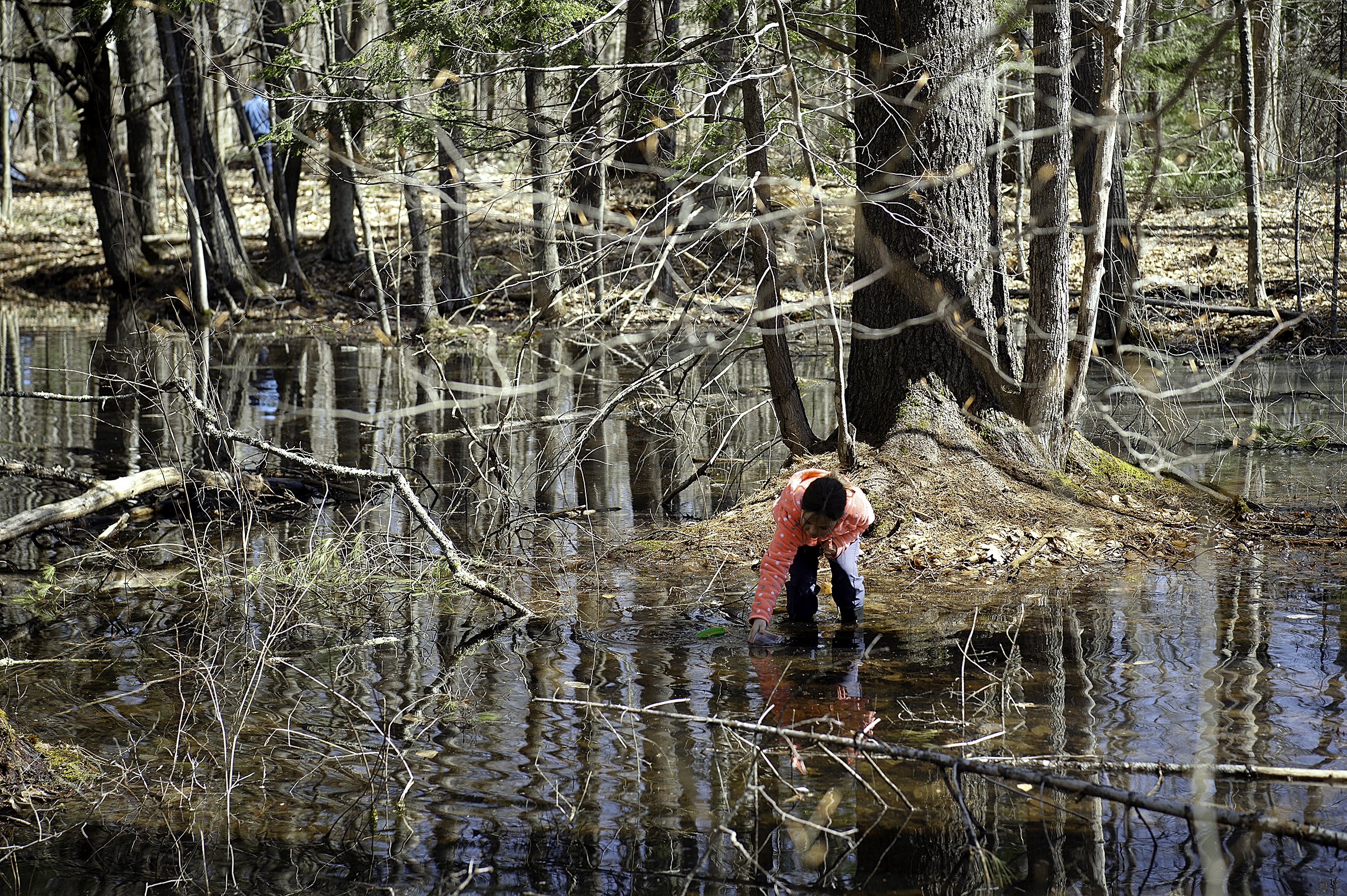
Carrie Ricker School third grader Harper Schneider, 9, searches for specimens Thursday during a Vernal Pool Field Trip at Smithfield Plantation in Litchfield. Seventy-eight third graders visited the preserve guided by Smithfield trustees, members of the Litchfield Conservation Commission and employees of the Maine Department of Environmental Protection. Students discovered fairy shrimp, spotted salamanders, caddis fly larva and other critters that make their way to the vernal pool after ice out. Daryn Slover/Sun Journal
Success. Please wait for the page to reload. If the page does not reload within 5 seconds, please refresh the page.
Enter your email and password to access comments.
Forgot Password?
Don't have a commenting profile? Create one.
Hi, to comment on stories you must create a commenting profile . This profile is in addition to your subscription and website login. Already have a commenting profile? Login .
Invalid username/password.
Please check your email to confirm and complete your registration.
Create a commenting profile by providing an email address, password and display name. You will receive an email to complete the registration. Please note the display name will appear on screen when you participate.
Already registered? Log in to join the discussion.
Only subscribers are eligible to post comments. Please subscribe or login first for digital access. Here’s why .
Use the form below to reset your password. When you've submitted your account email, we will send an email with a reset code.
Send questions/comments to the editors.
Member Log In
Please enter your username and password below. Already a subscriber but don't have one? Click here .
Not a subscriber? Click here to see your options
Springfield School Committee again boycotts meeting over superintendent search: Student field trip almost canceled
- Updated: Apr. 26, 2024, 12:33 a.m. |
- Published: Apr. 25, 2024, 9:29 p.m.
- Jeanette DeForge | [email protected]
SPRINGFIELD — Frustrated a discussion about the superintendent search was not included on the agenda, four School Committee members walked out of the meeting, leaving the group without a quorum before they could take a crucial vote.
This is the second time the four members, Vice Chairman Joesiah Gonzalez, Barbara Gresham, LaTonia Monroe Naylor and Denise Hurst have left the School Committee without a quorum over the increasingly contentious search for a new head of the about 23,700-student district.
But when the four walked out and the remaining three, Chairman Mayor Domenic J. Sarno, Christopher Collins and Peter Murphy, were ready to adjourn, Central High School Principal Thaddeus Tokarz stepped forward and urged them to do something so his students could leave on Friday to attend a competition in New Jersey.
If you purchase a product or register for an account through a link on our site, we may receive compensation. By using this site, you consent to our User Agreement and agree that your clicks, interactions, and personal information may be collected, recorded, and/or stored by us and social media and other third-party partners in accordance with our Privacy Policy.
Language selection
- Français fr
Unique Applied Military Science students’ experience in Eastern Europe
April 26, 2024 - Defence Stories
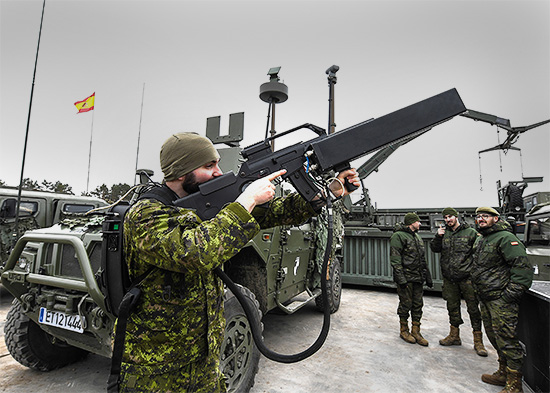
Photo credit: Task Force Latvia Image Technician
Army Technical Staff Officer/Warrant Officer Program (ATSOP/ATWOP) students from the Department of Applied Military Science (AMS) of the Royal Military College of Canada (RMC) recently returned from a week-long Field Study Trip (FST) to Eastern Europe.
This trip provided a unique opportunity for students to experience first-hand the technical interoperability challenges faced by the CAF in our leading role as the Framework Nation for the multinational NATO enhanced Forward Presence (eFP) Battle Group.
Students also learned of challenges associated with expanding to a combat-capable eFP Brigade, including the use of the Unforecasted Operational Requirement process in an operational environment. This knowledge and perspective will be carried throughout their careers and will be drawn upon to inform many future equipment projects.
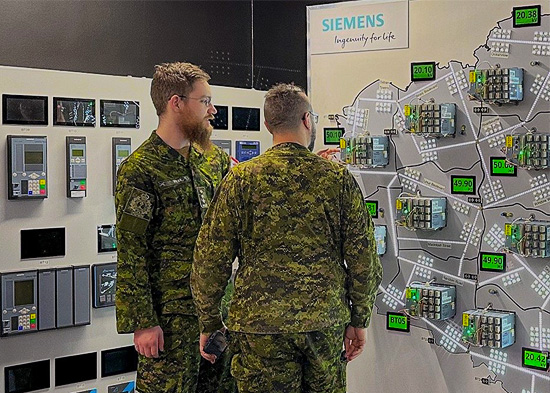
Capt David Wiebe and WO Jean-François Éthier track simulated cyber attacks at Foundation CR14 in Tallinn, Estonia. Photo credit: Capt Tanner Trepanier, AMS Student
"Our students have to be ready to engage with a wide range of organizations when they graduate and move into capability development positions , " said Col Walter Taylor, Director AMS . "FSTs deliver this vital component of our AMS programs as they provide exposure to real-world interoperability challenges that cannot be replicated in a classroom or cubicle."
Taking advantage of the relative closeness of European industry, this FST includes visits to emerging technology manufacturers as well as providers of in-service CAF equipment.
"This year, our students had the opportunity to visit the NATO Defence Innovation Accelerator for the North Atlantic (DIANA) hub in Estonia, where they engaged with academia and industry to learn about coalition efforts to advance cyber, fuel cell, and other dual-use technologies," added LCol Michael Dunning, AMS Chief Instructor.
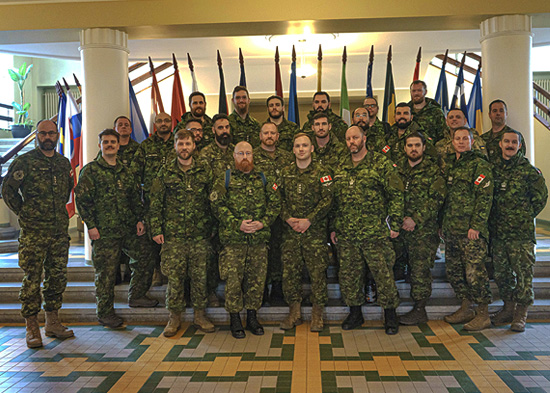
AMS Staff and students visiting the Estonian Military Academy Electronic Warfare Centre in Tartu. Photo credit: Capt Tanner Trepanier, AMS Student
AMS provides graduates for the Canadian Army and other CAF stakeholders with the technical knowledge, project management expertise, analytical thinking, and communication skills to support all stages of the capability development cycle.
Graduates of ATSOP/ATWOP give back to the institution by helping develop the CAF of tomorrow.
Captains and Warrant Officers interested in attending these programs and working in rewarding capability development roles, should discuss this option with their Career Manager, and watch for the course solicitation CANFORGEN in early Fall 2024 .
Page details
NYC Trip Explores Media, Marketing and Advertising
- Makena Warfield
- 22 April 2024
This spring, I joined 34 other students from the Media & Communication , Marketing & Advertising and Digital Marketing & Social Media programs on a trip to New York City. The Marketing & Advertising and Digital Marketing & Social Media students visited Ogilvy, an advertising firm, with Associate Professors Beth Carey and Diane Santurri. Media & Communication students visited the Paley Center for Media, formerly known as the Museum of Television & Radio and the Museum of Broadcasting, with Professors Chris Westgate and Johanna Church.
“I was super excited to see a new museum I’ve never been to,” says Jay Ibarra ’24, a Media & Communication major. “I was made aware of this opportunity from my favorite professor, Chris Westgate, so I jumped on board for the trip.”
For many of the students (including myself), this was our first time visiting New York City. It was fun to see the many name-brand stores and explore the busy streets filled with tourists looking to try one of the plethora of food trucks that lined the streets. In addition to the shopping opportunities, NYC is home to several major company headquarters such as Google, Facebook and NBC.
View this post on Instagram A post shared by Johnson & Wales Providence (@jwuprovidence)
Paley Center for Media
At the Paley Center, we explored the exhibits on television history, how TV has developed over time and an archive that holds over 160,000 television shows, radio programs, and advertisements that cover more than a century of media history.
“This field trip to the Paley Center for Media was more than just an excursion—it was a transformative experience for JWU students,” said Professor Chris Westgate. “By immersing themselves in the rich history and evolution of media, students gained invaluable insights into how media shapes our culture and vice-versa. From classic television shows to groundbreaking documentaries, the Paley Center offered a prism through which students could glimpse and interpret the power of media in today's world. It's not just a trip—it's an educational journey that fosters critical thinking, cultural understanding, and media literacy.”
The museum even featured a large exhibit on the popular television show The Masked Singer , which highlighted the costumes that the competitors wore while on the show. Some of the competitors highlighted in the exhibit included Amber Riley, Wayne Brady, Kevin Hart, Joey Fatone and T-Pain. Aside from its exhibits, the Paley Center also organizes the PaleyFest, an event that brings stars from various shows to the center for Q &A sessions with fans. They recently hosted stars from Live with Kelly and Mark , Invincible and Shark Tank . Later this year, they will be hosting stars from television shows such as Loki , Young Sheldon , The Late Show with Stephen Colbert and The Morning Show .

Overall, the center offered many highlights. “My favorite part was seeing the center’s library database, watching past Super Bowl games and going to the gaming lounge to see VR headsets, PS5, Xbox, PCs and Nintendo,” said Jay.
Personally, some of my favorite moments from the field trip were sitting in on an active lecture about representation throughout the history of television and going through archives of old and current television shows and movies.
Ogilvy Advertising Firm
Meanwhile, the Marketing & Advertising and Digital Marketing & Social Media students visited Ogilvy headquarters through an invitation from Katie Ferrigno ’12, a JWU Marketing & Advertising alumna, who serves as Social Strategy Director for the company. It was founded by David Ogilvy, considered the "Father of Advertising" and he was known for creative copy and themes, but the Ogilvy agency as of today is really positioned as fostering borderless creativity and collaboration “Visiting one of the oldest ad agencies and having the students hear how advertising campaigns are developed gives them a deeper understanding of what’s involved on both a creative and strategic level,” shared Professor Carey.
Students gained valuable insight into the company’s creative process during a panel with Olgivy advertising executives, who offered their perspective and expertise on advertising strategy and campaign development. One of Ogilvy's most recent campaigns was with skincare company CeraVe. They were able to execute the campaign by planning it out in three acts. “Act 1” consisted of a fake news campaign, “Act 2” was getting dermatologists, influencers, and the public to react to the idea of Michael Cera being the face behind CeraVe, and “Act 3” was the grand reveal of the prank with a television ads during the Super Bowl.
"The time I spent in New York City and Ogilvy headquarters was genuinely inspiring — if I had to pick a dream job, it would be this one,” said Jordan Millette ’26, a Digital Marketing & Social media major. “Seeing how they do their campaigns from start to finish and all the different departments needed to bring an amazing idea together made my jaw drop. I learned that it takes so much more planning than people realize to create a successful campaign that feels organic."
What We Learned
Going to NYC was a fantastic learning experience. From exploring how far representation has come in the world of television to hearing about the creative process of advertising campaigns, we all learned a lot. Going on field trips like this is a great way for students to have a hands-on learning experience outside of the classroom that offers valuable insight into potential career paths.
“In our advertising classes we focus heavily on market research and strategy,” said Professor Carey. “Hearing from the strategy and creative teams at Ogilvy helped to connect the dots for the students and see the course concepts come to life with an actual campaign like the CeraVe ads that ran before, during and after the Super Bowl across various media channels.” “Creating authentic, real-world experiences are important in helping our students uncover the ‘why’,” added Professor Santurri. “This was an amazing opportunity for some to visit the ‘Big City’ for the first time and create new friendships and professional networking opportunities. Students could learn about the many areas within agencies they could be a part of. Within the digital marketing ecosystem there are many areas of expertise, and our students will be prepared to choose the one they are most prepared and passionate about.”
For our professors, taking classroom lessons out into the world is crucial to their work and a key part of their students' success. “These trips are valuable because they provide new experiences and perspectives,” said Professor Church. “It's good for students to get out of their comfort zone and experience new things.”
Apply to JWU
Explore From Home
Transfer to JWU
More Information
Related posts.

Psychology Student Sierra Miller '27 Publishes Children's Book

6 Benefits of Living on Campus at JWU

Five Things to Know About Academic Support Services at JWU
- Arts & Sciences 77
- Business 50
- Engineering & Design 53
- Culinary 148
- Health & Wellness 42
- Hospitality Management 92
- Covid-19 12
- Experiential Education 45
- Students 121
- Request information
- Start your application
VLADIMIR NIKOLAEVICH MEGRE
Author of the series The Ringing Cedars of Russia
Little is known about Vladimir Megre's early background, apart from a few experiences he himself describes in the context of his writings. One of these occurred in the 1960s when over the course of a year the teen-aged Megre made periodic visits (as inconspicuously as possible) to a monk named Father Feodorit at the Trinity-Sergiev Monastery in the town of Sergiev Posad (then known as Zagorsk), just east of Moscow. These meetings (described in Chapter 24 of Book 2, The Ringing Cedars of Russia (pp. 119-31) left a lasting impression on the young Vladimir's consciousness, and can perhaps be taken as a prelude to his later spiritual transformation during his meetings, as he describes them, with Anastasia in the Siberian taiga.
We know that by the mid-1980s Megre was married with a daughter and living in Novosibirsk, where, like many other budding Russian capitalists, he took advantage of perestroika and the subsequent collapse of the communist system to launch into an entrepreneurial career. Even before perestroika he had shown his business acumen in finding ways to significantly increase the profits of a photographic collective. He went on to form a number of commercial co-operatives and by the late 1980s had leased a fleet of river steamers which plied the waters of the Ob River north of Novosibirsk. (see Chapter 1 of Book 1, Anastasia).
On one of these trips north in 1994, he encountered two elderly gentlemen who told him of a cedar tree (kedr in Russian, more commonly known as the Siberian pine in English) deep in the taiga forest that was making a 'ringing' or humming sound, which meant it was near the end of its centuries-old life and was ripe for cutting up and giving out pieces to those interested in its remarkable healing properties. He decided to return to the area the following year (1995) on his own to investigate. In place of the two elderly gentlemen he discovered a young woman in her twenties who said they were her grandfather and great-grandfather, and offered to take him to the cedar they had described. She turned out to be a recluse who lived all alone in the taiga, with no other company or facilities (including housing and food supply) than those provided by Nature.
But that was just the beginning. During the three days Megre spent with her in the taiga, she revealed to him not only the secrets of the ringing cedar, but many mysteries of Nature and the Universe - especially their role in the Divine order of things - that had been known to people in so-called ancient times but subsequently lost to mankind. Much of the earlier knowledge had been deliberately consigned to oblivion by so-called 'wise men' who felt their own sophisticated world-view threatened by the simple wisdom of their forebears.
At his new acquaintance's insistence he reluctantly abandoned his business career and set about writing a book about his taiga experiences (but only after he became penniless trying to set up a league of ethical entrepreneurs and only after his marriage failed, although he received help from a number of Moscow university students as well as his grown daughter Polina). The book, entitled Anastasia, was published in 1996 - largely thanks to the generosity of the manager of a print shop Megre had shown it to - and sold by the author himself in Moscow subway stations.
Then an incredible turn of events suddenly took place. A great number of those who purchased the book returned right after they finished reading it (or even before) to buy copies for their friends and neighbors, and the first print-run of 2,000 copies sold out in a very short time. A generous donor financed the next printing, before a recognized publisher caught wind of its success and launched it into mass production. (The Russian editions of the Ringing Cedars Series are now published by Dilya Publishers in Moscow & St-Petersburg.) And one copy of the first printing even ended up in the United States Library of Congress collection.
The success of Book 1 prompted the author to write a second volume, The Ringing Cedars of Russia, which offers, among other things, a fascinating behind-the-scenes look at the story of how Anastasia came to be published, as well as a deeper exploration of the concepts revealed in the first book. Subsequent visits to Anastasia in the taiga - including conversations with the son she had conceived together with the author - engendered even more books, which now number eight in the original (the last one running into two volumes). By 1999, only three years after the first book appeared, Vladimir Megre had become modern Russia's most widely read author, with his writings selling in the millions.
At the end of Book 3, The Space of Love, may be found a thumbnail sketch of the "Series at a glance", as well as a brief description of the background to the series and profiles of the author, translator and editor.
It is interesting to note the change in the author's style over the course of the books. According to his own admission, before his taiga adventure this hard-nosed businessman had never written a word of prose or poetry before in his life, but he reluctantly launched into writing a book at the insistence of Anastasia. He admits his initial prose did not sound professional, which only aggravated his difficulty in getting his first book to press. This prose may well be described as 'choppy' and simplistic, but over the first few books - under the influence, he says, of Anastasia - his writing gradually developed into a style more and more polished and professional. By the latter part of Book 3, entitled The Space of Love, and throughout a good part of Book 4, Co-creation, his dialogues with the Siberian recluse take on the quality of poetic prose, including elements of met re and even rhyme. These features have been preserved as much as possible in the English translation.
John Woodsworth, Slavic Research Group, University of Ottawa
For more information on the book and their availability in English and other languages, see Publications section of this web-site.

SNAPSHOT: Saratoga Springs High School…
Share this:.
- Click to share on Facebook (Opens in new window)
- Click to share on X (Opens in new window)
- Things to Do
- Classifieds
Latest Headlines
Snapshot: saratoga springs high school choraliers and bel canto choir students explore nyc.

Saratoga Springs High School Choraliers and Bel Canto Choir students under the direction and leadership of SSHS Choral Director, Karen Houlahan, recently embarked on a field trip to New York City. The highlight of their trip was the opportunity to perform at St. Patrick’s Cathedral. In addition to the performance, students also watched performances of “Aladdin,” and “Hamilton,” and attended a vocal workshop with longtime “Hamilton” cast member Thayne Jasperson. The students went to the top of Rockefeller Center, explored Times Square, and explored Central Park. (Photo provided)
More in Things To Do

Upcoming calendar

Questions and answers from the ‘Car Doctor’
- Today's news
- Reviews and deals
- Climate change
- 2024 election
- Fall allergies
- Health news
- Mental health
- Sexual health
- Family health
- So mini ways
- Unapologetically
- Buying guides
Entertainment
- How to Watch
- My watchlist
- Stock market
- Biden economy
- Personal finance
- Stocks: most active
- Stocks: gainers
- Stocks: losers
- Trending tickers
- World indices
- US Treasury bonds
- Top mutual funds
- Highest open interest
- Highest implied volatility
- Currency converter
- Basic materials
- Communication services
- Consumer cyclical
- Consumer defensive
- Financial services
- Industrials
- Real estate
- Mutual funds
- Credit cards
- Balance transfer cards
- Cash back cards
- Rewards cards
- Travel cards
- Online checking
- High-yield savings
- Money market
- Home equity loan
- Personal loans
- Student loans
- Options pit
- Fantasy football
- Pro Pick 'Em
- College Pick 'Em
- Fantasy baseball
- Fantasy hockey
- Fantasy basketball
- Download the app
- Daily fantasy
- Scores and schedules
- GameChannel
- World Baseball Classic
- Premier League
- CONCACAF League
- Champions League
- Motorsports
- Horse racing
- Newsletters
New on Yahoo
- Privacy Dashboard
15 men brought to military enlistment office after mass brawl in Moscow Oblast
Local security forces brought 15 men to a military enlistment office after a mass brawl at a warehouse of the Russian Wildberries company in Elektrostal, Moscow Oblast on Feb. 8, Russian Telegram channel Shot reported .
29 people were also taken to police stations. Among the arrested were citizens of Kyrgyzstan.
A mass brawl involving over 100 employees and security personnel broke out at the Wildberries warehouse in Elektrostal on Dec. 8.
Read also: Moscow recruits ‘construction brigades’ from Russian students, Ukraine says
We’re bringing the voice of Ukraine to the world. Support us with a one-time donation, or become a Patron !
Read the original article on The New Voice of Ukraine
Recommended Stories
2024 nfl draft grades: denver broncos earn one of our lowest grades mostly due to one pick.
Yahoo Sports' Charles McDonald breaks down the Broncos' 2024 draft.
NFL Draft: Packers fan upset with team's 1st pick, and Lions fans hilariously rubbed it in
Not everyone was thrilled with their team's draft on Thursday night.
NFL Draft: Bears take Iowa punter, who immediately receives funny text from Caleb Williams
There haven't been many punters drafted in the fourth round or higher like Tory Taylor just was. Chicago's No. 1 overall pick welcomed him in unique fashion.
NFL to allow players to wear protective Guardian Caps in games beginning with 2024 season
The NFL will allow players to wear protective Guardian Caps during games beginning with the 2024 season. The caps were previously mandated for practices.
NFL Draft: Spencer Rattler's long wait ends, as Saints draft him in the 5th round
Spencer Rattler once looked like a good bet to be a first-round pick.
Cowboys owner Jerry Jones compared his 2024 NFL Draft strategy to robbing a bank
Dallas Cowboys owner Jerry Jones made an amusing analogy when asked why the team selected three offensive lineman in the 2024 NFL Draft.
Joel Embiid not happy that Knicks fans took over 76ers home playoff games: It 'pisses me off'
"I don't think that should happen. It's not OK."
Korey Cunningham, former NFL lineman, found dead in New Jersey home at age 28
Cunningham played 31 games in the NFL with the Cardinals, Patriots and Giants.
2024 NFL Draft grades: Kansas City Chiefs get even richer with one of the best hauls this year
Yahoo Sports' Charles McDonald breaks down the Chiefs' 2024 draft.
Jamie Dimon is worried the US economy is headed back to the 1970s
JPMorgan's CEO is concerned the US economy could be in for a repeat of the stagflation that hampered the country during the 1970s.
Panthers owner David Tepper stopped by Charlotte bar that criticized his draft strategy
“Please Let The Coach & GM Pick This Year" read a sign out front.
2024 NFL Draft grades: Baltimore Ravens do what they do best — let good players fall into their laps
Yahoo Sports' Charles McDonald breaks down the Ravens' 2024 draft.
NBA playoffs: Tyrese Hailburton game-winner and potential Damian Lillard Achilles injury leaves Bucks in nightmare
Tyrese Haliburton hit a floater with 1.1 seconds left in overtime to give the Indiana Pacers a 121–118 win over the Milwaukee Bucks. The Pacers lead their first-round playoff series two games to one.
2024 NFL Draft grades: Minnesota Vikings risked a lot to get J.J. McCarthy and Dallas Turner
Yahoo Sports' Charles McDonald breaks down the Vikings' 2024 draft.
2024 NFL Draft grades: Green Bay Packers' stockpile of picks put to good use
Yahoo Sports' Charles McDonald breaks down the Packers' 2024 draft.
Dave McCarty, player on 2004 Red Sox championship team, dies 1 week after team's reunion
The Red Sox were already mourning the loss of Tim Wakefield from that 2004 team.
Texans WR Tank Dell sustains 'minor injury' in mass shooting, was reportedly 1 of 10 shot at Florida nightclub
Tank Dell is in "good spirits" after being reportedly being "caught in the crossfire" of the shooting that left 10 injured at a Florida nightclub.
The best budgeting apps for 2024
Budgeting apps can help you keep track of your finances, stick to a spending plan and reach your money goals. These are the best budget-tracking apps available right now.
2024 NFL Draft grades: Los Angeles Chargers begin Jim Harbaugh's roster restock with very good class
Yahoo Sports' Charles McDonald breaks down the Chargers' 2024 draft.
Skelly, Home Depot's 12-foot skeleton, gets a dog — and he's a very good boy
Halloween may be six months away, but Home Depot unveiled some of its latest and greatest decorations, including a dog pal for Skelly, the brand’s gigantic and popular 12-foot skeleton.

Turn Your Curiosity Into Discovery
Latest facts.
13 Facts About I Need A Patch For That Day May 21st
13 Facts About Walk On Your Wild Side Day April 12th
40 facts about elektrostal.
Written by Lanette Mayes
Modified & Updated: 02 Mar 2024
Reviewed by Jessica Corbett

Elektrostal is a vibrant city located in the Moscow Oblast region of Russia. With a rich history, stunning architecture, and a thriving community, Elektrostal is a city that has much to offer. Whether you are a history buff, nature enthusiast, or simply curious about different cultures, Elektrostal is sure to captivate you.
This article will provide you with 40 fascinating facts about Elektrostal, giving you a better understanding of why this city is worth exploring. From its origins as an industrial hub to its modern-day charm, we will delve into the various aspects that make Elektrostal a unique and must-visit destination.
So, join us as we uncover the hidden treasures of Elektrostal and discover what makes this city a true gem in the heart of Russia.
Key Takeaways:
- Elektrostal, known as the “Motor City of Russia,” is a vibrant and growing city with a rich industrial history, offering diverse cultural experiences and a strong commitment to environmental sustainability.
- With its convenient location near Moscow, Elektrostal provides a picturesque landscape, vibrant nightlife, and a range of recreational activities, making it an ideal destination for residents and visitors alike.
Known as the “Motor City of Russia.”
Elektrostal, a city located in the Moscow Oblast region of Russia, earned the nickname “Motor City” due to its significant involvement in the automotive industry.
Home to the Elektrostal Metallurgical Plant.
Elektrostal is renowned for its metallurgical plant, which has been producing high-quality steel and alloys since its establishment in 1916.
Boasts a rich industrial heritage.
Elektrostal has a long history of industrial development, contributing to the growth and progress of the region.
Founded in 1916.
The city of Elektrostal was founded in 1916 as a result of the construction of the Elektrostal Metallurgical Plant.
Located approximately 50 kilometers east of Moscow.
Elektrostal is situated in close proximity to the Russian capital, making it easily accessible for both residents and visitors.
Known for its vibrant cultural scene.
Elektrostal is home to several cultural institutions, including museums, theaters, and art galleries that showcase the city’s rich artistic heritage.
A popular destination for nature lovers.
Surrounded by picturesque landscapes and forests, Elektrostal offers ample opportunities for outdoor activities such as hiking, camping, and birdwatching.
Hosts the annual Elektrostal City Day celebrations.
Every year, Elektrostal organizes festive events and activities to celebrate its founding, bringing together residents and visitors in a spirit of unity and joy.
Has a population of approximately 160,000 people.
Elektrostal is home to a diverse and vibrant community of around 160,000 residents, contributing to its dynamic atmosphere.
Boasts excellent education facilities.
The city is known for its well-established educational institutions, providing quality education to students of all ages.
A center for scientific research and innovation.
Elektrostal serves as an important hub for scientific research, particularly in the fields of metallurgy, materials science, and engineering.
Surrounded by picturesque lakes.
The city is blessed with numerous beautiful lakes, offering scenic views and recreational opportunities for locals and visitors alike.
Well-connected transportation system.
Elektrostal benefits from an efficient transportation network, including highways, railways, and public transportation options, ensuring convenient travel within and beyond the city.
Famous for its traditional Russian cuisine.
Food enthusiasts can indulge in authentic Russian dishes at numerous restaurants and cafes scattered throughout Elektrostal.
Home to notable architectural landmarks.
Elektrostal boasts impressive architecture, including the Church of the Transfiguration of the Lord and the Elektrostal Palace of Culture.
Offers a wide range of recreational facilities.
Residents and visitors can enjoy various recreational activities, such as sports complexes, swimming pools, and fitness centers, enhancing the overall quality of life.
Provides a high standard of healthcare.
Elektrostal is equipped with modern medical facilities, ensuring residents have access to quality healthcare services.
Home to the Elektrostal History Museum.
The Elektrostal History Museum showcases the city’s fascinating past through exhibitions and displays.
A hub for sports enthusiasts.
Elektrostal is passionate about sports, with numerous stadiums, arenas, and sports clubs offering opportunities for athletes and spectators.
Celebrates diverse cultural festivals.
Throughout the year, Elektrostal hosts a variety of cultural festivals, celebrating different ethnicities, traditions, and art forms.
Electric power played a significant role in its early development.
Elektrostal owes its name and initial growth to the establishment of electric power stations and the utilization of electricity in the industrial sector.
Boasts a thriving economy.
The city’s strong industrial base, coupled with its strategic location near Moscow, has contributed to Elektrostal’s prosperous economic status.
Houses the Elektrostal Drama Theater.
The Elektrostal Drama Theater is a cultural centerpiece, attracting theater enthusiasts from far and wide.
Popular destination for winter sports.
Elektrostal’s proximity to ski resorts and winter sport facilities makes it a favorite destination for skiing, snowboarding, and other winter activities.
Promotes environmental sustainability.
Elektrostal prioritizes environmental protection and sustainability, implementing initiatives to reduce pollution and preserve natural resources.
Home to renowned educational institutions.
Elektrostal is known for its prestigious schools and universities, offering a wide range of academic programs to students.
Committed to cultural preservation.
The city values its cultural heritage and takes active steps to preserve and promote traditional customs, crafts, and arts.
Hosts an annual International Film Festival.
The Elektrostal International Film Festival attracts filmmakers and cinema enthusiasts from around the world, showcasing a diverse range of films.
Encourages entrepreneurship and innovation.
Elektrostal supports aspiring entrepreneurs and fosters a culture of innovation, providing opportunities for startups and business development.
Offers a range of housing options.
Elektrostal provides diverse housing options, including apartments, houses, and residential complexes, catering to different lifestyles and budgets.
Home to notable sports teams.
Elektrostal is proud of its sports legacy, with several successful sports teams competing at regional and national levels.
Boasts a vibrant nightlife scene.
Residents and visitors can enjoy a lively nightlife in Elektrostal, with numerous bars, clubs, and entertainment venues.
Promotes cultural exchange and international relations.
Elektrostal actively engages in international partnerships, cultural exchanges, and diplomatic collaborations to foster global connections.
Surrounded by beautiful nature reserves.
Nearby nature reserves, such as the Barybino Forest and Luchinskoye Lake, offer opportunities for nature enthusiasts to explore and appreciate the region’s biodiversity.
Commemorates historical events.
The city pays tribute to significant historical events through memorials, monuments, and exhibitions, ensuring the preservation of collective memory.
Promotes sports and youth development.
Elektrostal invests in sports infrastructure and programs to encourage youth participation, health, and physical fitness.
Hosts annual cultural and artistic festivals.
Throughout the year, Elektrostal celebrates its cultural diversity through festivals dedicated to music, dance, art, and theater.
Provides a picturesque landscape for photography enthusiasts.
The city’s scenic beauty, architectural landmarks, and natural surroundings make it a paradise for photographers.
Connects to Moscow via a direct train line.
The convenient train connection between Elektrostal and Moscow makes commuting between the two cities effortless.
A city with a bright future.
Elektrostal continues to grow and develop, aiming to become a model city in terms of infrastructure, sustainability, and quality of life for its residents.
In conclusion, Elektrostal is a fascinating city with a rich history and a vibrant present. From its origins as a center of steel production to its modern-day status as a hub for education and industry, Elektrostal has plenty to offer both residents and visitors. With its beautiful parks, cultural attractions, and proximity to Moscow, there is no shortage of things to see and do in this dynamic city. Whether you’re interested in exploring its historical landmarks, enjoying outdoor activities, or immersing yourself in the local culture, Elektrostal has something for everyone. So, next time you find yourself in the Moscow region, don’t miss the opportunity to discover the hidden gems of Elektrostal.
Q: What is the population of Elektrostal?
A: As of the latest data, the population of Elektrostal is approximately XXXX.
Q: How far is Elektrostal from Moscow?
A: Elektrostal is located approximately XX kilometers away from Moscow.
Q: Are there any famous landmarks in Elektrostal?
A: Yes, Elektrostal is home to several notable landmarks, including XXXX and XXXX.
Q: What industries are prominent in Elektrostal?
A: Elektrostal is known for its steel production industry and is also a center for engineering and manufacturing.
Q: Are there any universities or educational institutions in Elektrostal?
A: Yes, Elektrostal is home to XXXX University and several other educational institutions.
Q: What are some popular outdoor activities in Elektrostal?
A: Elektrostal offers several outdoor activities, such as hiking, cycling, and picnicking in its beautiful parks.
Q: Is Elektrostal well-connected in terms of transportation?
A: Yes, Elektrostal has good transportation links, including trains and buses, making it easily accessible from nearby cities.
Q: Are there any annual events or festivals in Elektrostal?
A: Yes, Elektrostal hosts various events and festivals throughout the year, including XXXX and XXXX.
Was this page helpful?
Our commitment to delivering trustworthy and engaging content is at the heart of what we do. Each fact on our site is contributed by real users like you, bringing a wealth of diverse insights and information. To ensure the highest standards of accuracy and reliability, our dedicated editors meticulously review each submission. This process guarantees that the facts we share are not only fascinating but also credible. Trust in our commitment to quality and authenticity as you explore and learn with us.
Share this Fact:
km travel chesterfield 2024 brochure prices
This is our KM Travel Tour Operators page, we have listed the full address of KM Travel as well as phone numbers and websites. KM Travel is in Chesterfield, KM Travel may offer holiday tours, sightseeing tours, and general city tours in Chesterfield.
If you have used KM Travel before be sure to leave your own comment or rating on the city tour or holiday tour that you went on so other poeple wishing to use this company can read fair and honest reviews before the book there holiday with KM Travel. Please remember that KM Travel may offer much more that just UK holiday tours, UK Coach Tours and city tours so remember to contact the travel agents company using the details below to find out more information.
Latest KM Travel Reviews

- Transportation (Chesterfield)
- KM Travel Chesterfield
Chesterfield, United Kingdom
Related places.
- Get directions
- Photos page
QR code, vCard

Activate map
Business hours
Reviews of km travel chesterfield.
- Things to Do
- Restaurants
- Holiday Rentals
- Travel Stories
- Add a Place
- Travel Forum
- Travellers' Choice
- Help Centre
Lovely holiday - KM British & European Coach Holiday
- Europe
- United Kingdom (UK)
- England
- Yorkshire
- South Yorkshire
- Barnsley
- Barnsley - Things to Do
- KM British & European Coach Holiday
Brilliant holiday to Torquay, tinsel & turkey 20 th November to Belgrave Sands hotel. The hotel was... read more
Thanks to all at KM TRAVEL especially our driver courier Matt who made the trip more enjoyable and... read more
Trains Moscow to Elektrostal: Times, Prices and Tickets
- Train Times
- Seasonality
- Accommodations
Moscow to Elektrostal by train
The journey from Moscow to Elektrostal by train is 32.44 mi and takes 2 hr 7 min. There are 71 connections per day, with the first departure at 12:15 AM and the last at 11:46 PM. It is possible to travel from Moscow to Elektrostal by train for as little as or as much as . The best price for this journey is .
Get from Moscow to Elektrostal with Virail
Virail's search tool will provide you with the options you need when you want to go from Moscow to Elektrostal. All you need to do is enter the dates of your planned journey, and let us take care of everything else. Our engine does the hard work, searching through thousands of routes offered by our trusted travel partners to show you options for traveling by train, bus, plane, or carpool. You can filter the results to suit your needs. There are a number of filtering options, including price, one-way or round trip, departure or arrival time, duration of journey, or number of connections. Soon you'll find the best choice for your journey. When you're ready, Virail will transfer you to the provider's website to complete the booking. No matter where you're going, get there with Virail.
How can I find the cheapest train tickets to get from Moscow to Elektrostal?
Prices will vary when you travel from Moscow to Elektrostal. On average, though, you'll pay about for a train ticket. You can find train tickets for prices as low as , but it may require some flexibility with your travel plans. If you're looking for a low price, you may need to prepare to spend more time in transit. You can also often find cheaper train tickets at particular times of day, or on certain days of the week. Of course, ticket prices often change during the year, too; expect to pay more in peak season. For the lowest prices, it's usually best to make your reservation in advance. Be careful, though, as many providers do not offer refunds or exchanges on their cheapest train tickets. Unfortunately, no price was found for your trip from Moscow to Elektrostal. Selecting a new departure or arrival city, without dramatically changing your itinerary could help you find price results. Prices will vary when you travel from Moscow to Elektrostal. On average, though, you'll pay about for a train ticket. If you're looking for a low price, you may need to prepare to spend more time in transit. You can also often find cheaper train tickets at particular times of day, or on certain days of the week. Of course, ticket prices often change during the year, too; expect to pay more in peak season. For the lowest prices, it's usually best to make your reservation in advance. Be careful, though, as many providers do not offer refunds or exchanges on their cheapest train tickets.
How long does it take to get from Moscow to Elektrostal by train?
The journey between Moscow and Elektrostal by train is approximately 32.44 mi. It will take you more or less 2 hr 7 min to complete this journey. This average figure does not take into account any delays that might arise on your route in exceptional circumstances. If you are planning to make a connection or operating on a tight schedule, give yourself plenty of time. The distance between Moscow and Elektrostal is around 32.44 mi. Depending on the exact route and provider you travel with, your journey time can vary. On average, this journey will take approximately 2 hr 7 min. However, the fastest routes between Moscow and Elektrostal take 1 hr 3 min. If a fast journey is a priority for you when traveling, look out for express services that may get you there faster. Some flexibility may be necessary when booking. Often, these services only leave at particular times of day - or even on certain days of the week. You may also find a faster journey by taking an indirect route and connecting in another station along the way.
How many journeys from Moscow to Elektrostal are there every day?
On average, there are 71 daily departures from Moscow to Elektrostal. However, there may be more or less on different days. Providers' timetables can change on certain days of the week or public holidays, and many also vary at particular times of year. Some providers change their schedules during the summer season, for example. At very busy times, there may be up to departures each day. The providers that travel along this route include , and each operates according to their own specific schedules. As a traveler, you may prefer a direct journey, or you may not mind making changes and connections. If you have heavy suitcases, a direct journey could be best; otherwise, you might be able to save money and enjoy more flexibility by making a change along the way. Every day, there are an average of 18 departures from Moscow which travel directly to Elektrostal. There are 53 journeys with one change or more. Unfortunately, no connection was found for your trip from Moscow to Elektrostal. Selecting a new departure or arrival city, without dramatically changing your itinerary could help you find connections.
Book in advance and save
If you're looking for the best deal for your trip from Moscow to Elektrostal, booking train tickets in advance is a great way to save money, but keep in mind that advance tickets are usually not available until 3 months before your travel date.
Stay flexible with your travel time and explore off-peak journeys
Planning your trips around off-peak travel times not only means that you'll be able to avoid the crowds, but can also end up saving you money. Being flexible with your schedule and considering alternative routes or times will significantly impact the amount of money you spend on getting from Moscow to Elektrostal.
Always check special offers
Checking on the latest deals can help save a lot of money, making it worth taking the time to browse and compare prices. So make sure you get the best deal on your ticket and take advantage of special fares for children, youth and seniors as well as discounts for groups.
Unlock the potential of slower trains or connecting trains
If you're planning a trip with some flexible time, why not opt for the scenic route? Taking slower trains or connecting trains that make more stops may save you money on your ticket – definitely worth considering if it fits in your schedule.
Best time to book cheap train tickets from Moscow to Elektrostal
The cheapest Moscow - Elektrostal train tickets can be found for as low as $35.01 if you’re lucky, or $54.00 on average. The most expensive ticket can cost as much as $77.49.
Find the best day to travel to Elektrostal by train
When travelling to Elektrostal by train, if you want to avoid crowds you can check how frequently our customers are travelling in the next 30-days using the graph below. On average, the peak hours to travel are between 6:30am and 9am in the morning, or between 4pm and 7pm in the evening. Please keep this in mind when travelling to your point of departure as you may need some extra time to arrive, particularly in big cities!
Moscow to Elektrostal CO2 Emissions by Train

Anything we can improve?
Frequently Asked Questions
Go local from moscow, trending routes, weekend getaways from moscow, international routes from moscow and nearby areas, other destinations from moscow, other popular routes.
Na Ulitse Yalagina 13B Apartments
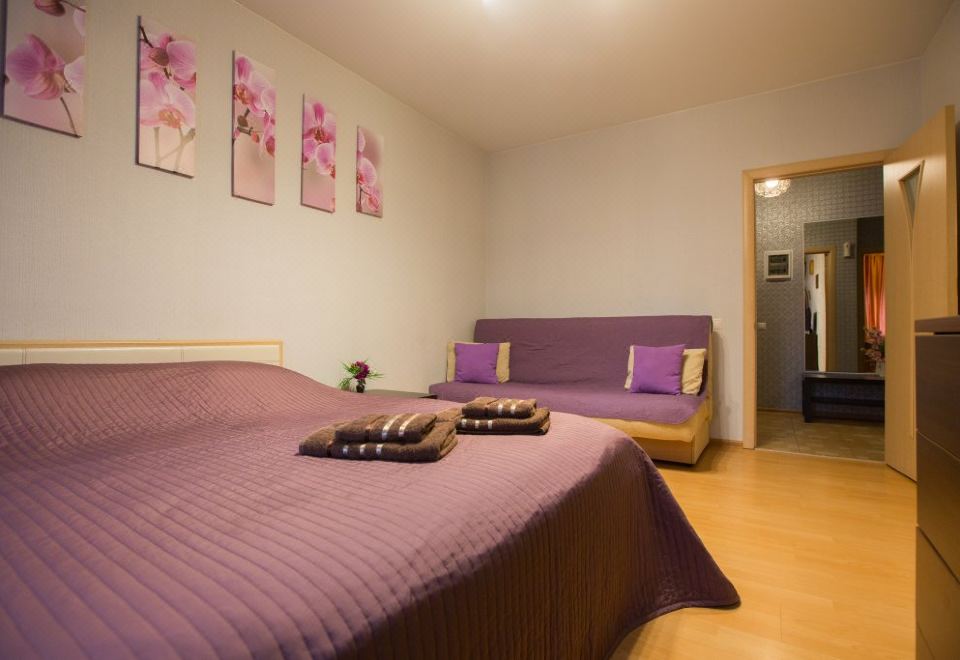
Trending Questions
Property policies, frequently asked questions, how much does it cost to stay at na ulitse yalagina 13b apartments, what are the check-in and check-out times at na ulitse yalagina 13b apartments, does na ulitse yalagina 13b apartments provide airport transfer services, what amenities and services does na ulitse yalagina 13b apartments have, does na ulitse yalagina 13b apartments have a swimming pool, does na ulitse yalagina 13b apartments have fitness amenities, does na ulitse yalagina 13b apartments provide wi-fi, does na ulitse yalagina 13b apartments have non-smoking rooms, does na ulitse yalagina 13b apartments have a restaurant, is parking available at na ulitse yalagina 13b apartments, popular hotels, popular attractions, explore more.
Expedia Rewards is now One Key™
Elektrostal, visit elektrostal, check elektrostal hotel availability, popular places to visit.
- Electrostal History and Art Museum
You can spend time exploring the galleries in Electrostal History and Art Museum in Elektrostal. Take in the museums while you're in the area.
- Cities near Elektrostal

- Places of interest
- Yuri Gagarin Cosmonaut Training Center
- Peter the Great Military Academy
- Central Museum of the Air Forces at Monino
- History of Russian Scarfs and Shawls Museum
- Balashikha Arena
- Balashikha Museum of History and Local Lore
- Bykovo Manor
- Pekhorka Park
- Ramenskii History and Art Museum
- Malenky Puppet Theater
- Drama Theatre BOOM
- Likino Dulevo Museum of Local Lore
- Noginsk Museum and Exhibition Center
- Pavlovsky Posad Museum of Art and History
- Saturn Stadium
- Fairy Tale Children's Model Puppet Theater
- Fifth House Gallery
- Church of Vladimir
- Malakhovka Museum of History and Culture
- Orekhovo Zuevsky City Exhibition Hall
Destinations in May
Destinations in 2024.
Please note prices are based on two persons sharing a twin/double room. Single room supplements may apply, please call check single availability/price.
Comments are closed.
- Destinations
- Hotel Information
- Private hire
- Special offers / Late availability
- Travel Insurance
- Employment Opportunities

NEW CHRISTMAS TOUR 2024 - Bournemouth - Norfolk Royale Hotel - BROCHURE ADDITION . 2024 EUROPEAN HOLIDAYS - Early release - ITALY - Lake Garda / Alassio Click here to download our 2024 Brochure All Our Holidays Include In The Price: Free Door to Door Taxi ( Subject to Area ) ~ Luxury Coach Travel ~ Reserved Coach Seats . Personally Selected ...
www.kmchesterfield.co.uk
KM Travel of Barnsley, South Yorkshire. Request a brochure by: Calling: 01226 245564 email: [email protected] . download: click here to download the 2024 Tour Brochure.
KM Travel is in Chesterfield, KM Travel may offer holiday tours, sightseeing tours, and general city tours in Chesterfield. If you have used KM Travel before be sure to leave your own comment or rating on the city tour or holiday tour that you went on so other poeple wishing to use this company can read fair and honest reviews before the book ...
What people are saying. " HOLIDAY TO BLACKPOOL ". Oct 2023. Thanks to all at KM TRAVEL especially our driver courier Matt who made the trip more enjoyable and a credit to the co... " Lovely place enjoyed it clean need a bit of investment there ". Aug 2022. Stayed at ilfracombe Devon 14 to 20 Aug the coach was lovely our driver Tony was ...
Reviews, contact details and business hours of KM Travel Chesterfield at 27 Stephenson Place, Chesterfield, Derbyshire. Check out nearby places on a map. Write a review. Log in. ... 21:03 Tuesday, 23 April 2024: Business hours. Monday: 9:00 am - 4:30 pm: Tuesday: 9:00 am - 4:30 pm: Wednesday: 9:00 am - 4:30 pm: Thursday: 9:00 am - 4:30 ...
KM Travel of Barnsley, South Yorkshire. Tel: (01226) 245564 [email protected] . Home. Booking Guide Request Brochure Customer Information Contact Us. ... Our 2024 British Coach Holiday Brochure is now available to download and available shortly from our Market Street office in paper form.
5. £339. Nil. Please note prices are based on two persons sharing a twin/double room. Single room supplements may apply, please call check single availability/price. Price Includes: * Luxury Coach Travel * Local Departure Points. * En-suite bedrooms * Excursions. * Half Board Accommodation.
Page List. (Click on the page required to be linked with that page in the brochure) Page 1 - Front cover. Page 2 - Introduction. Page 3 - Contact information. Customer information. Page 4 - How to make a booking. Holiday index January to June. Page 5 - Holiday index June to December.
Our 2024 UK Brochure is OUT NOW! Order yours today. 01246 474747 Opening Times Brochures . Menu (current) Home Holidays Day Trips ... A-Line Travel 15 Soresby Street Chesterfield S40 1JW 01246 474747 [email protected] . A-Line Travel, Company number 13060548
Lovely holiday. Review of KM British & European Coach Holiday. Reviewed 9 December 2023. Just back from a T&T break at Exmouth. The hotel and food were brilliant, and the driver James was the best. However we had a bad start after waiting nearly one and a half hours in cold and rain at Ilkeston for the coach. I know there was traffic problems ...
Geeveetravelchesterfield, Chesterfield. 1,657 likes · 24 talking about this · 29 were here. DOOR TO DOOR COACH HOLIDAYS DAY TRIPS AND PRIVATE HIRE
Thankyou received our brochure in the post , I see you have new for 2024 Kynren weekend , we went last year and its the most amazing show I've seen well worth going recommended to everybody. 22w. Robert Lindley. Can I have a brochure please 9 monsal crescent Barnsley S71 3PY. 15w.
KM Travel of Barnsley, South Yorkshire. Tel: (01226) 245564 [email protected] . Home. Booking Guide Request Brochure Customer Information Contact Us. Skip to content. Request a brochure by: Calling: 01226 245564 . email: [email protected] download: ... Please note prices are based on two persons sharing a twin/double room ...
Central Air Force Museum The Central Air Force Museum, housed at Monino Airfield, 40 km east of Moscow, Russia, is one of the world's largest aviation museums, and the largest for Russian aircraft. 173 aircraft and 127 aircraft engines are on display, and the museum also features collections of weapons, instruments, uniforms (including captured U2 pilot Gary Powers' uniform), other Cold War ...
The journey from Moscow to Elektrostal by train is 32.44 mi and takes 2 hr 7 min. There are 71 connections per day, with the first departure at 12:15 AM and the last at 11:46 PM. It is possible to travel from Moscow to Elektrostal by train for as little as or as much as . The best price for this journey is . Journey Duration.
KM Travel of Barnsley, South Yorkshire. Tel: (01226) 245564 [email protected] . ... we guarantee excellent customer service and affordable prices. ... Winter/Spring 2024. Blackpool 2024 Potters Resorts 2024. Our booking office is located at: 52, ...
2022 Brochure . Page List ... All Our Holidays Include In The Price: Free Door to Door Taxi ( Subject to Area ) ~ Luxury Coach Travel ~ Reserved Coach Seats . Personally Selected Hotels ~ En-suite Bedrooms ~ Free Varied Excursions . Telephone: 01246 -556617 ...
Prices at Na Ulitse Yalagina 13B Apartments are subject to change according to dates, hotel policy, and other factors. To view prices, please search for the dates you wish to stay at the hotel. What are the check-in and check-out times at Na Ulitse Yalagina 13B Apartments? The check-in time is after 14:00 and the check-out time is before 12:00.
Cities near Elektrostal. Places of interest. Pavlovskiy Posad Noginsk. Travel guide resource for your visit to Elektrostal. Discover the best of Elektrostal so you can plan your trip right.

IMAGES
COMMENTS
Field trips aren't a threat to in-class instruction, Erickson notes, they're a tool to help bolster engagement and expand students' horizons. "It's possible to expose students to a broader world and have a culturally enriching curriculum without sacrificing academic outcomes, and it may actually improve academic outcomes," Erickson says.
Here's why field trips are important. The study found that regardless of gender, ethnicity or socioeconomic status, children who take school trips have better grades (59%), higher graduation rates from high school (95%) and college (63%) and greater income (12% higher annually). In fact, 89% said educational trips had a positive, lasting ...
The Educational Value of Field Trips. Taking students to an art museum improves critical thinking skills, and more. Jay P. Greene joined EdNext Editor-in-chief Marty West to discuss the benefits of field trips, including how seeing live theater is a more enriching experience to students, on the EdNext podcast.
NEA (n.d.). How field trips boost students' lifelong success. NEA Member Benefits. Peetz, C. (2019, February 4). Inequities discovered in student field trips. Bethesda Magazine. Rahman, T., & Spafford, H. (2009) Value of field trips for student learning in the biological sciences. In Teaching and Learning for Global Graduates.
The 10 Benefits of School Field Trips. Students do better in school. Students learn more social skills. Students can visit new places. Students can become critical thinkers. Students learn by experiencing, not just by studying "theory". Students learn more time management skills. Students get to learn by doing. Students learn more teamwork ...
Teachers also gain many benefits. Students are interested and motivated, permitting the instruction to rise to new and higher levels. Students who ... Students on field trips sharpen their skills of observation and perception by utilizing all their senses (Nabors et al., 2009). Students develop a positive attitude for learning, motivating
The Benefits of a Museum/Field Trip. Students are energized by the excitement and anticipation of leaving the school environment. The transportation to and from the museum/site is often a pleasant open-social time. Students have the opportunity to see new things and learn about them in a more unstructured way.
Students who go on field trips become more empathetic and tolerant. A study conducted by the University of Arkansas found that students that participate in a field trip to an art museum show increased empathy, tolerance and critical thinking skills. Studying art gives students a chance to think about a topic or theme from a different perspective.
Field trips work best when they provide support for students to explore in a personally meaningful way. Learning in field trips is impacted by many factors (DeWitt & Storksdieck, 2008). The structure of the field trip impacts learning. Some structure is needed to best support student learning, ( Stronck, 1983) yet programming that is overly ...
According to Amy Krakowka, "field trips are a form of active learning as. students gain more experience when they see t hings themselves". [Krakowka, A.R, 2012] Likewise, in a designation by Randy ...
Field trips are an important part of education, offering students hands-on experience, introducing new perspectives, and improving student engagement. Field trips can also help students gain a better understanding of the topics they are studying, develop problem-solving and critical thinking skills, and cultivate curiosity and exploration.
Students benefit as they participate in unique experiences that build on their learning. Most importantly, field trips pique the interest of young-learners, a key factor in childrens' motivation to learn, inspiring students to engage with concepts in ways that are relevant and meaningful. Field trips reinforce topics and ideas learned in the classroom.
A field trip is an experiential learning opportunity in which students leave the traditional classroom setting to learn within their community. During field trips, K-12 students can participate in a wide variety of experiences to expand upon their current knowledge and to apply what they learn in school. Behrendt and Franklin (2014) pointed ...
The benefits of virtual field trips: Virtual field trips can augment face-to-face field trips as a resource that can be used before, during and after the trip or, where this is not possible, as a stand-alone resource. Before the in-person field trip, students can familiarise themselves with the field site.
Different Learning Modalities. Information is presented to students in a way that meets different learning modalities. Field trips provide students with the ability to learn by doing instead of just passively listening to the information being taught in class. Students are exposed to new experiences that, hopefully, broaden their horizons.
Field trips offer numerous benefits, such as student engagement, says Engelke. The best field trips allow kids to talk to curators, scientists, historians, and other professionals, she explains. Seeing adults in action, and discussing their work and research, can be an enlightening experience for students, especially those with few enrichment ...
2. Varied teaching styles keep students engaged. Educators know that a new teacher can create a spark in the classroom. Virtual field trips bring change and diversity to the school day. When done well, a virtual field trip with a live instructor is more fun and engaging than an in-person field trip! 3.
Lastly, virtual field trips have the unique benefit of being more climate-friendly than many in-person field trips, which often require students to travel on greenhouse gas-emitting buses. Some researchers argue that this makes virtual field trips especially beneficial for climate change education, which can provide educational benefits without ...
No Restrictions. Our virtual field trips let students go anywhere at anytime. Research says that virtual trips can provide the same learning benefits that an actual trip does. Taken together, this means that our virtual field trips can be a successful way to teach students about the world around them - any day, any time!
The student "suddenly passed away" the school said. 📷 Key players Meteor shower up next 📷 Leaders at the dais 20 years till the next one U.S. Elections Sports Entertainment Life Money Tech ...
Students from Carrie Ricker School pick out a dip net Thursday during their Vernal Pool Field Trip at Smithfield Plantation in Litchfield. Students used the nets to catch critters such as fairy ...
The School Committee had to approve a field trip so Central High School students could compete in an international event. Skip to Article. Set weather. Back To Main Menu Close.
Army Technical Staff Officer/Warrant Officer Program (ATSOP/ATWOP) students from the Department of Applied Military Science (AMS) of the Royal Military College of Canada (RMC) recently returned from a week-long Field Study Trip (FST) to Eastern Europe.. This trip provided a unique opportunity for students to experience first-hand the technical interoperability challenges faced by the CAF in ...
This spring, I joined 34 other students from the Media & Communication, Marketing & Advertising and Digital Marketing & Social Media programs on a trip to New York City. The Marketing & Advertising and Digital Marketing & Social Media students visited Ogilvy, an advertising firm, with Associate Professors Beth Carey and Diane Santurri. Media & Communication students visited the Paley Center ...
Author of the series The Ringing Cedars of Russia. Little is known about Vladimir Megre's early background, apart from a few experiences he himself describes in the context of his writings. One of these occurred in the 1960s when over the course of a year the teen-aged Megre made periodic visits (as inconspicuously as possible) to a monk named ...
Saratoga Springs High School Choraliers and Bel Canto Choir students under the direction and leadership of SSHS Choral Director, Karen Houlahan, recently embarked on a field trip to New York City.
Local security forces brought 15 men to a military enlistment office after a mass brawl at a warehouse of the Russian Wildberries company in Elektrostal, Moscow Oblast on Feb. 8, Russian Telegram channel Shot reported.. 29 people were also taken to police stations. Among the arrested were citizens of Kyrgyzstan. A mass brawl involving over 100 employees and security personnel broke out at the ...
Elektrostal benefits from an efficient transportation network, including highways, railways, and public transportation options, ensuring convenient travel within and beyond the city. Famous for its traditional Russian cuisine. Food enthusiasts can indulge in authentic Russian dishes at numerous restaurants and cafes scattered throughout ...
Planning your trips around off-peak travel times not only means that you'll be able to avoid the crowds, but can also end up saving you money. Being flexible with your schedule and considering alternative routes or times will significantly impact the amount of money you spend on getting from Moscow to Elektrostal.